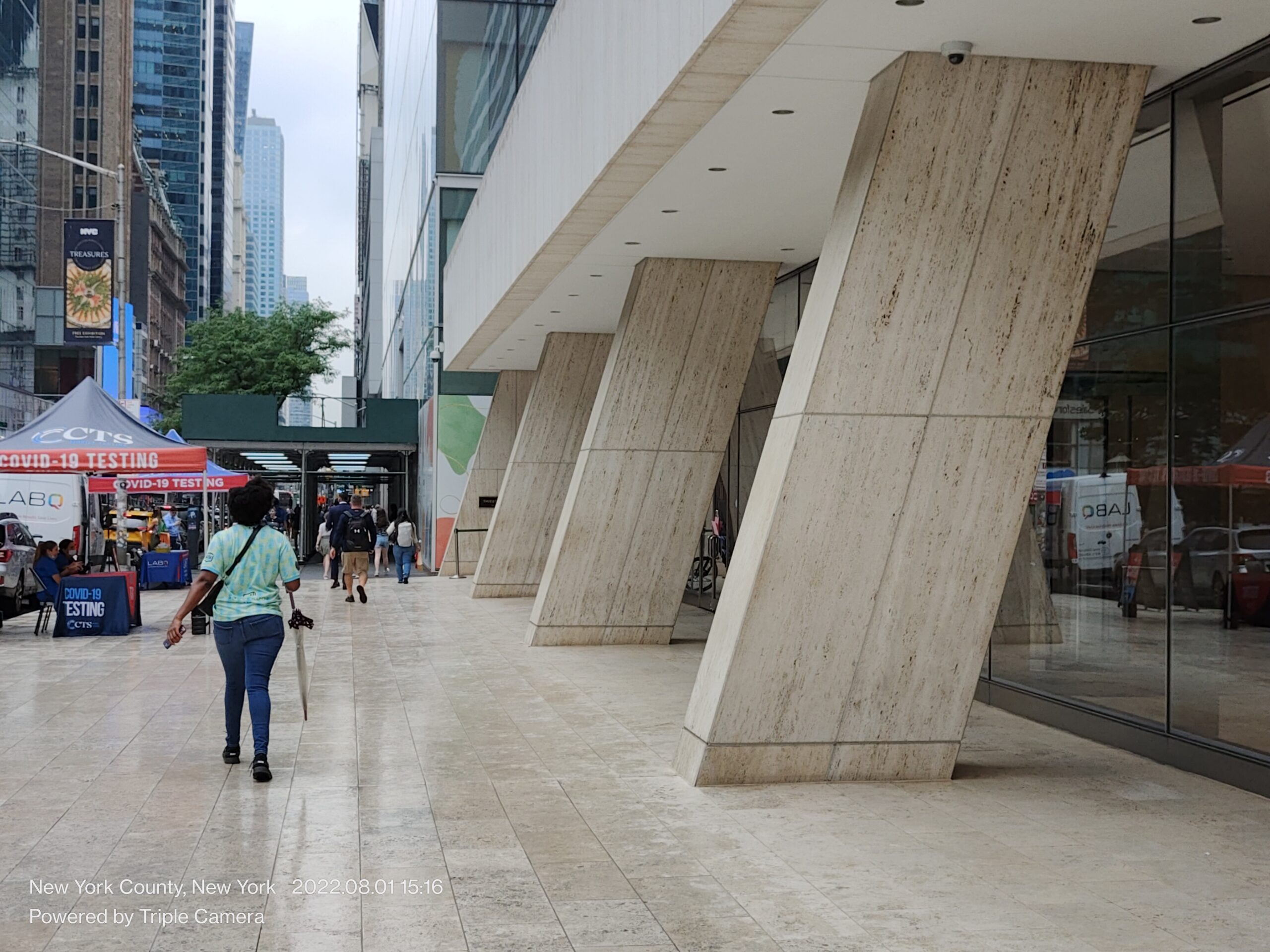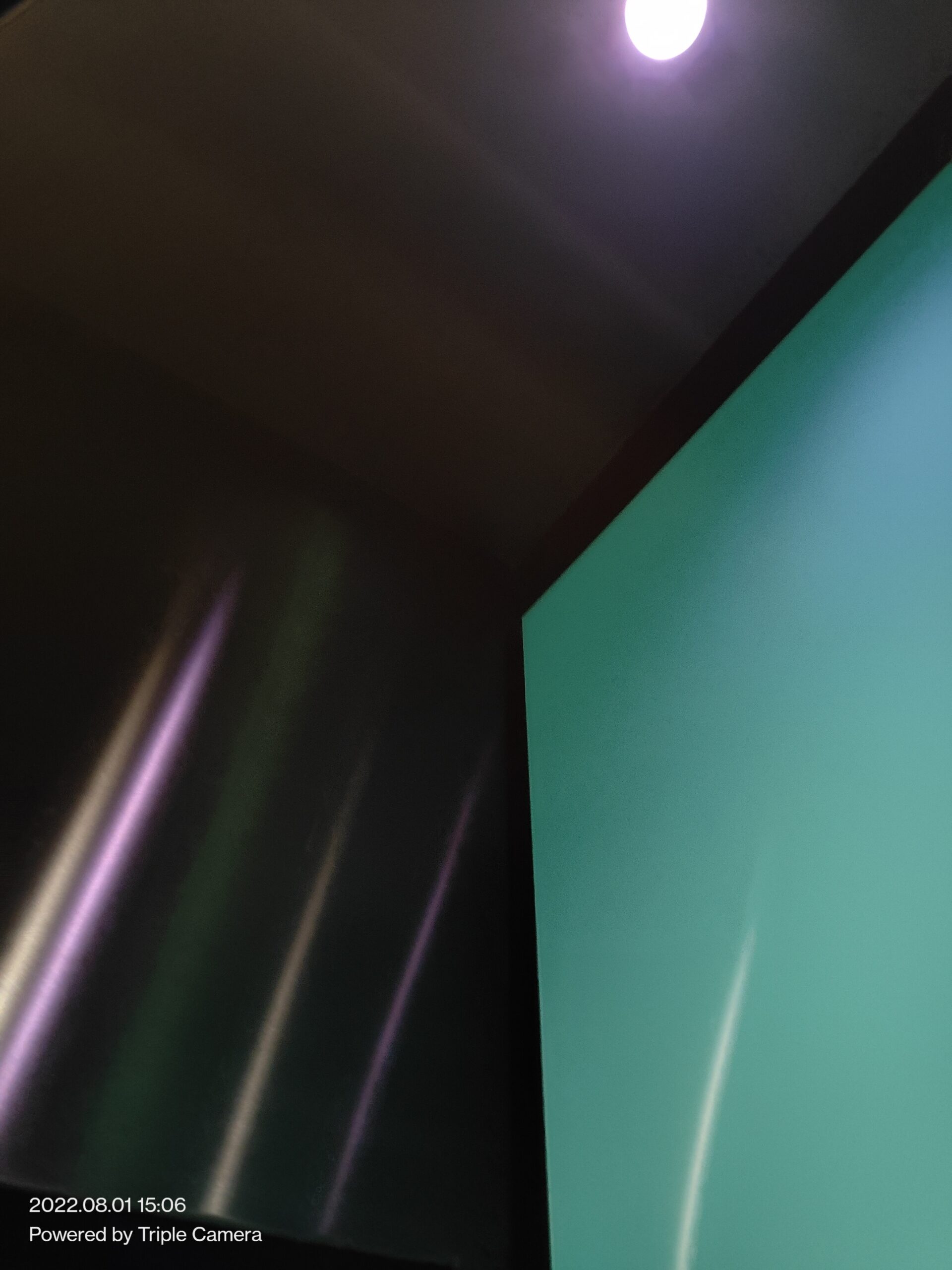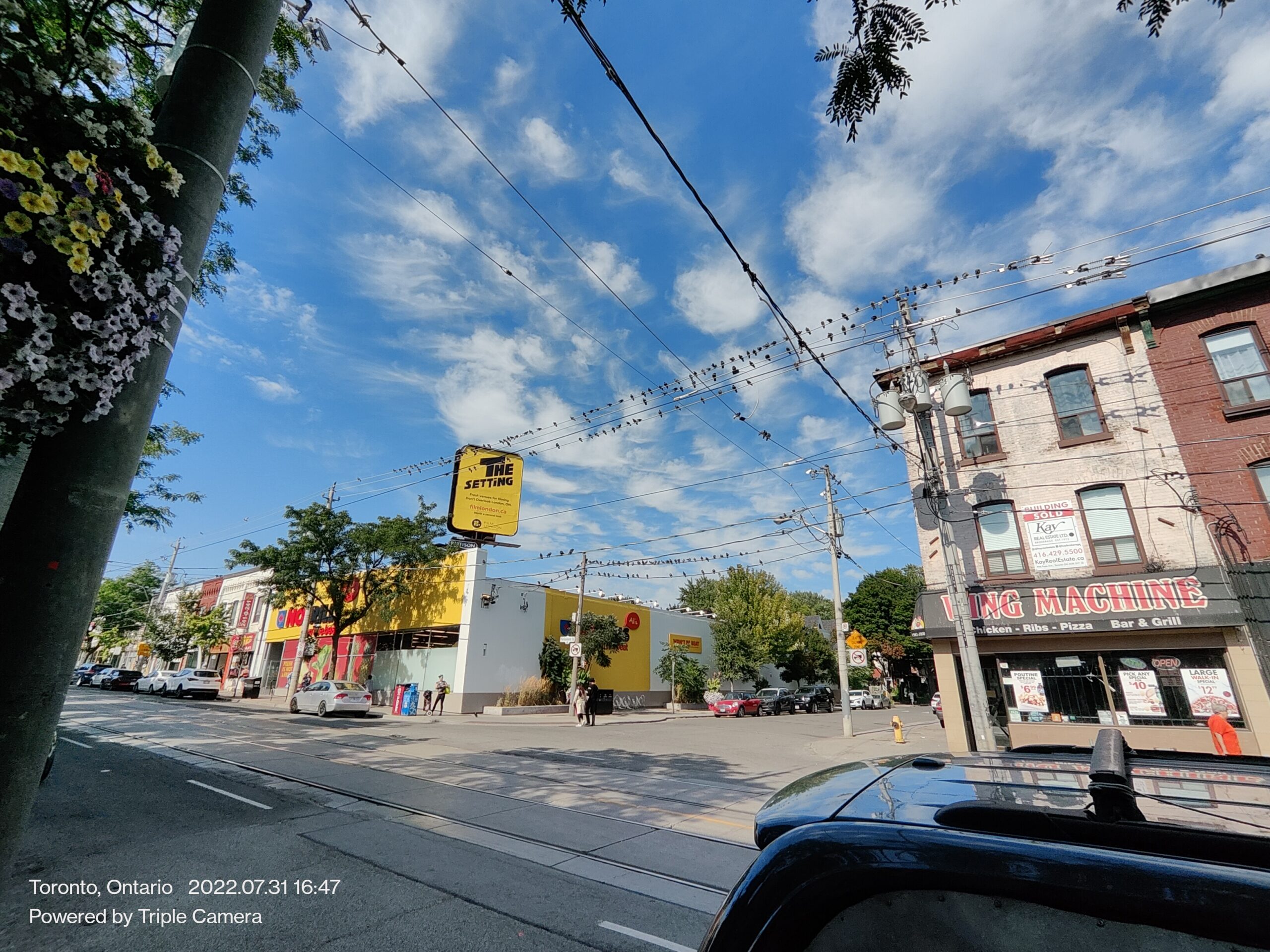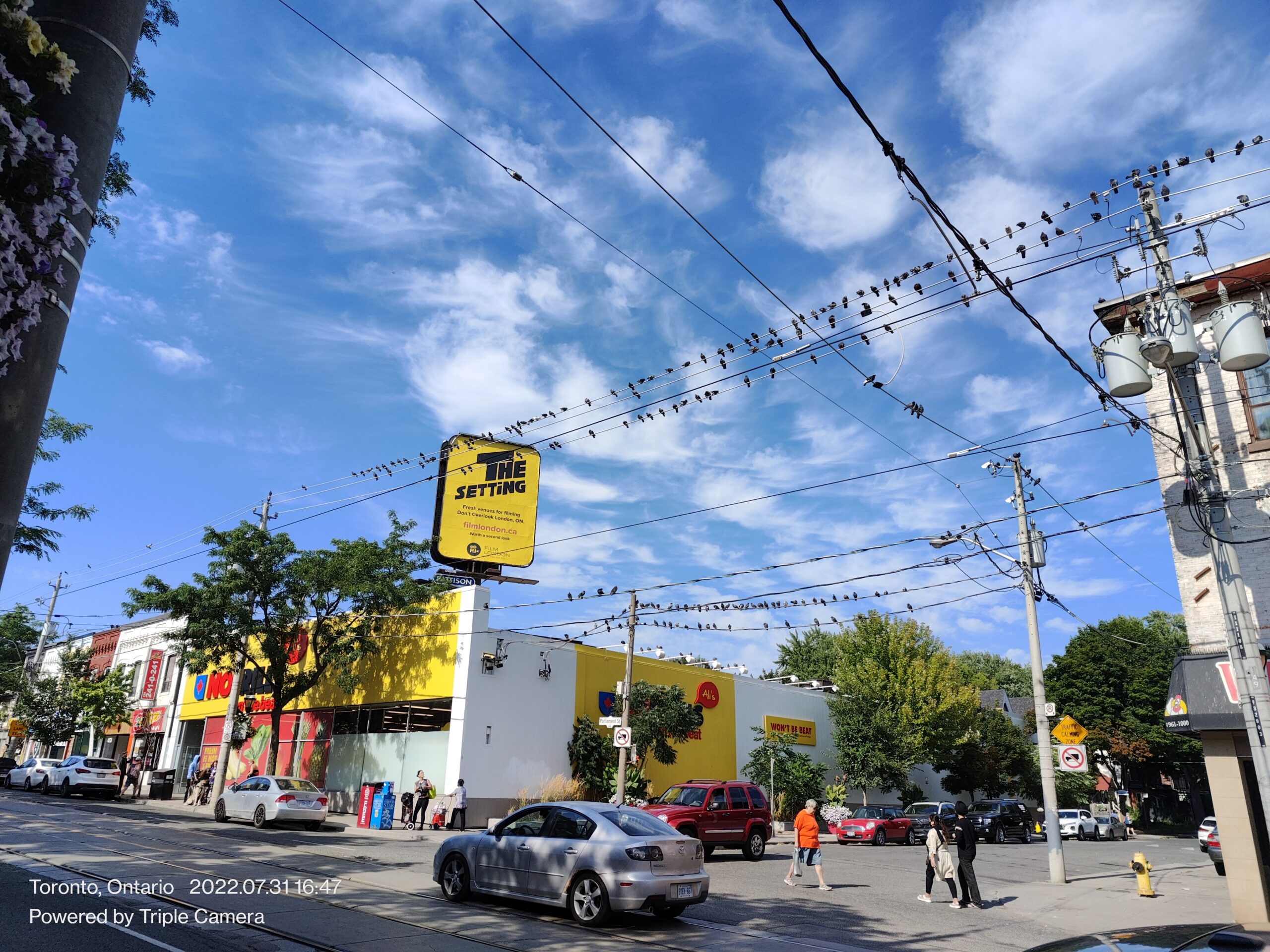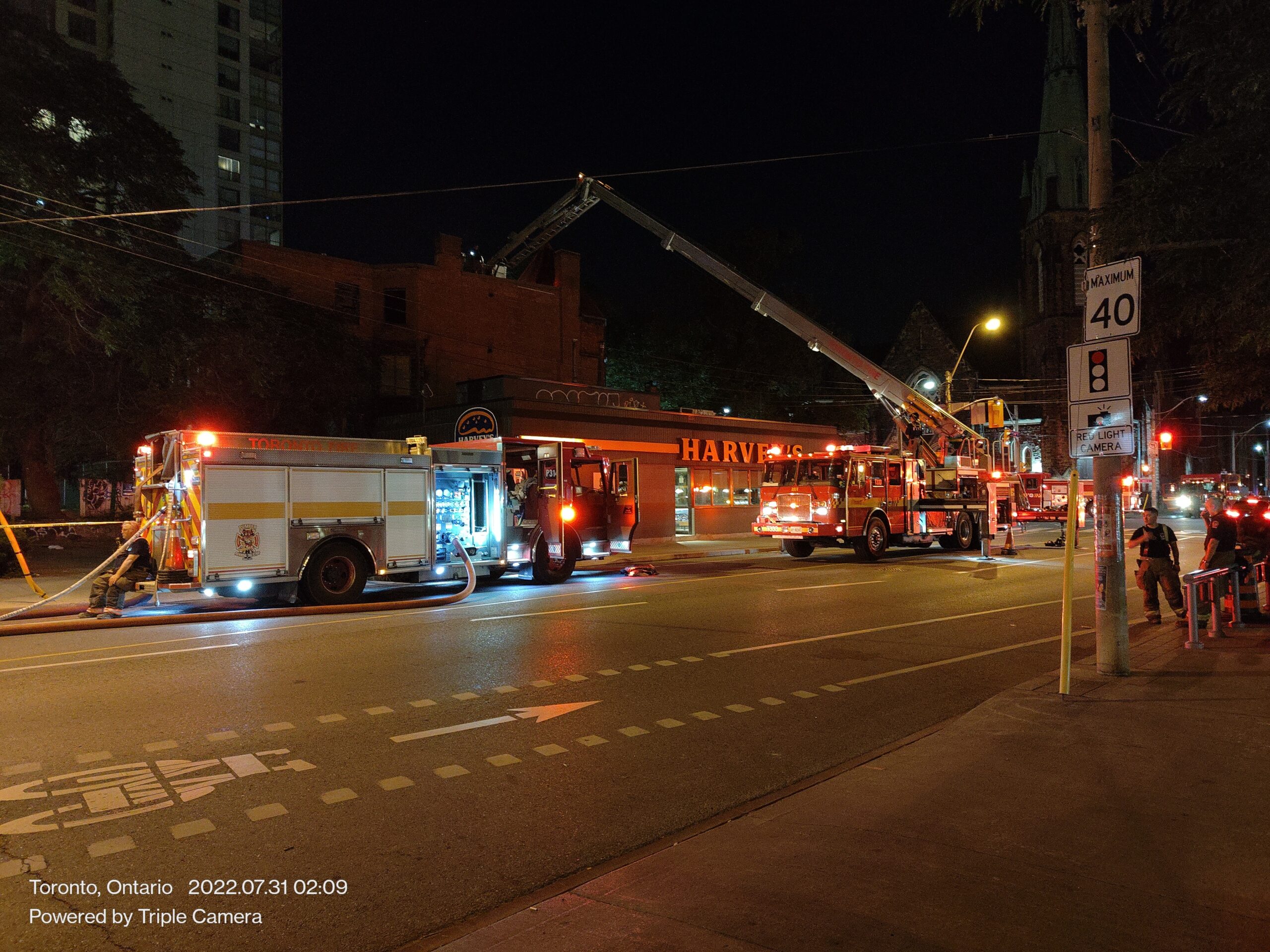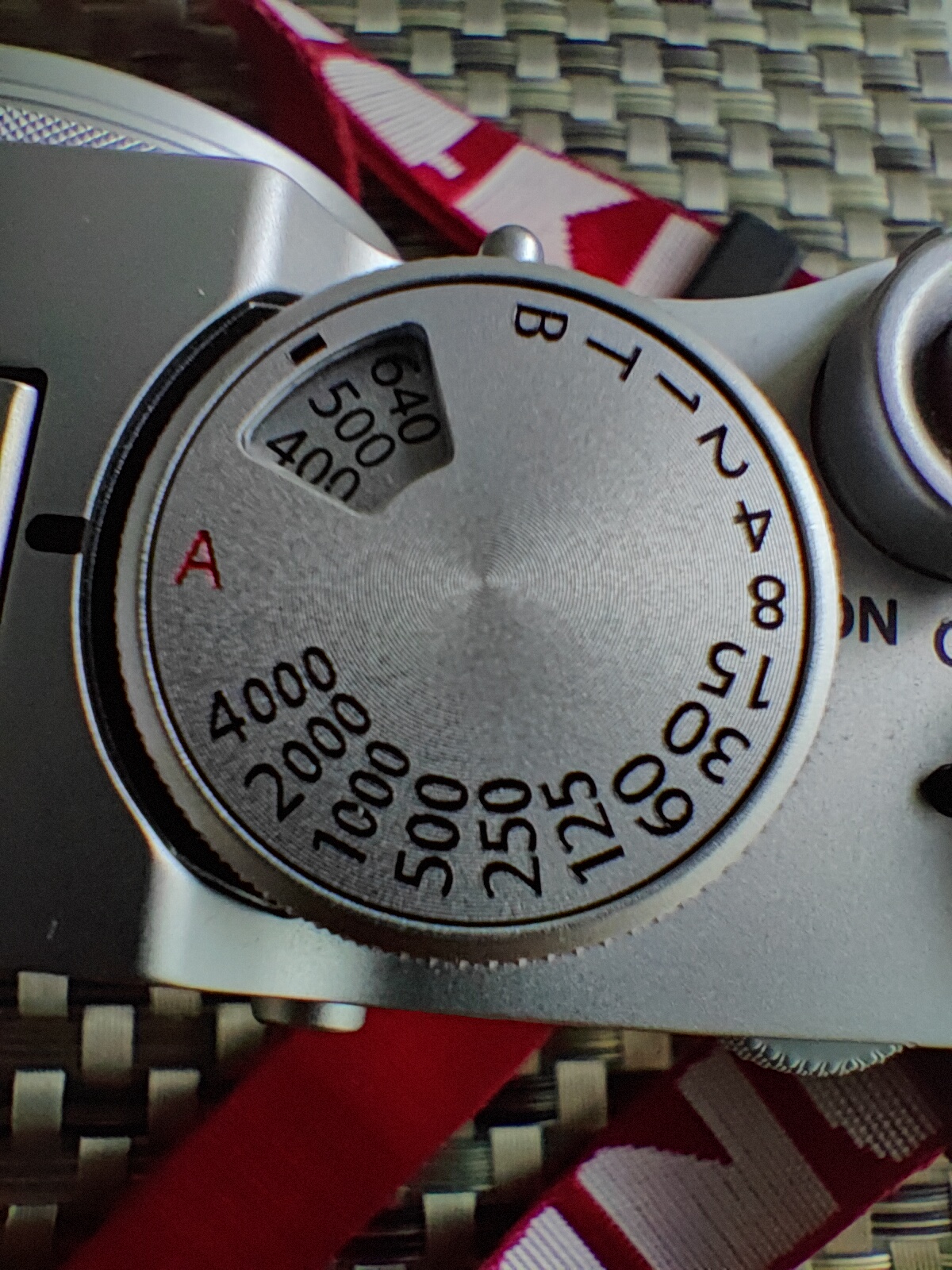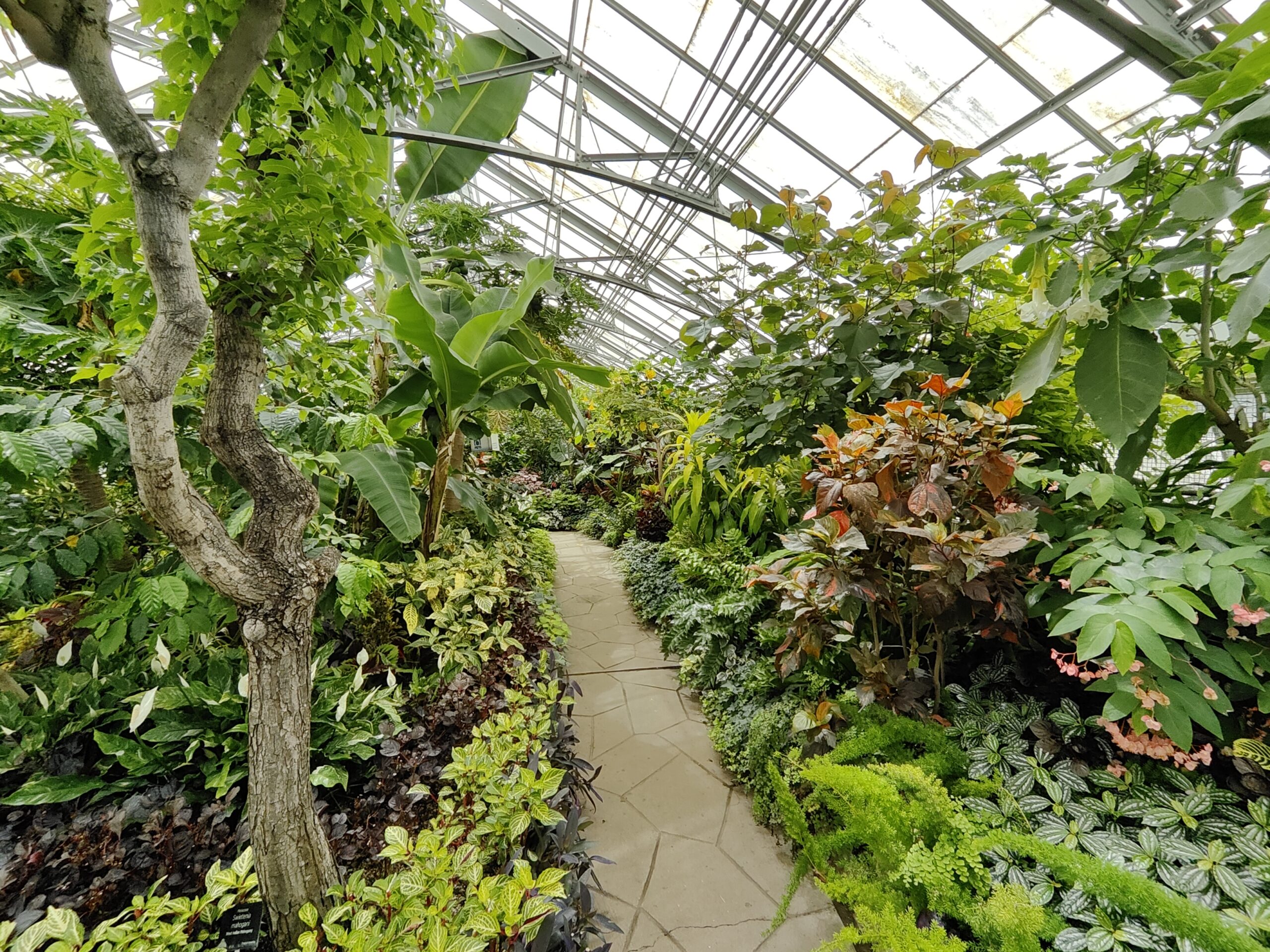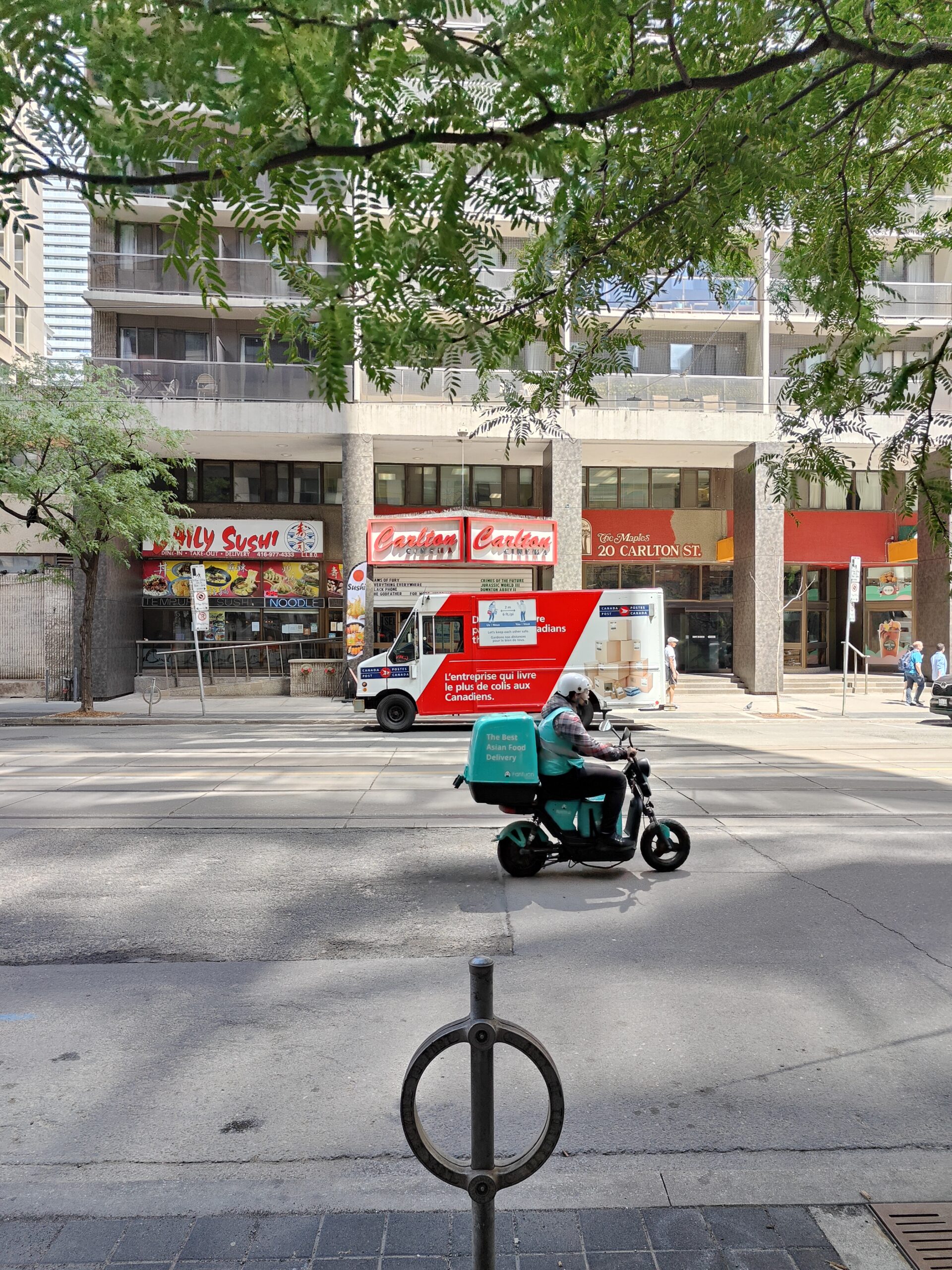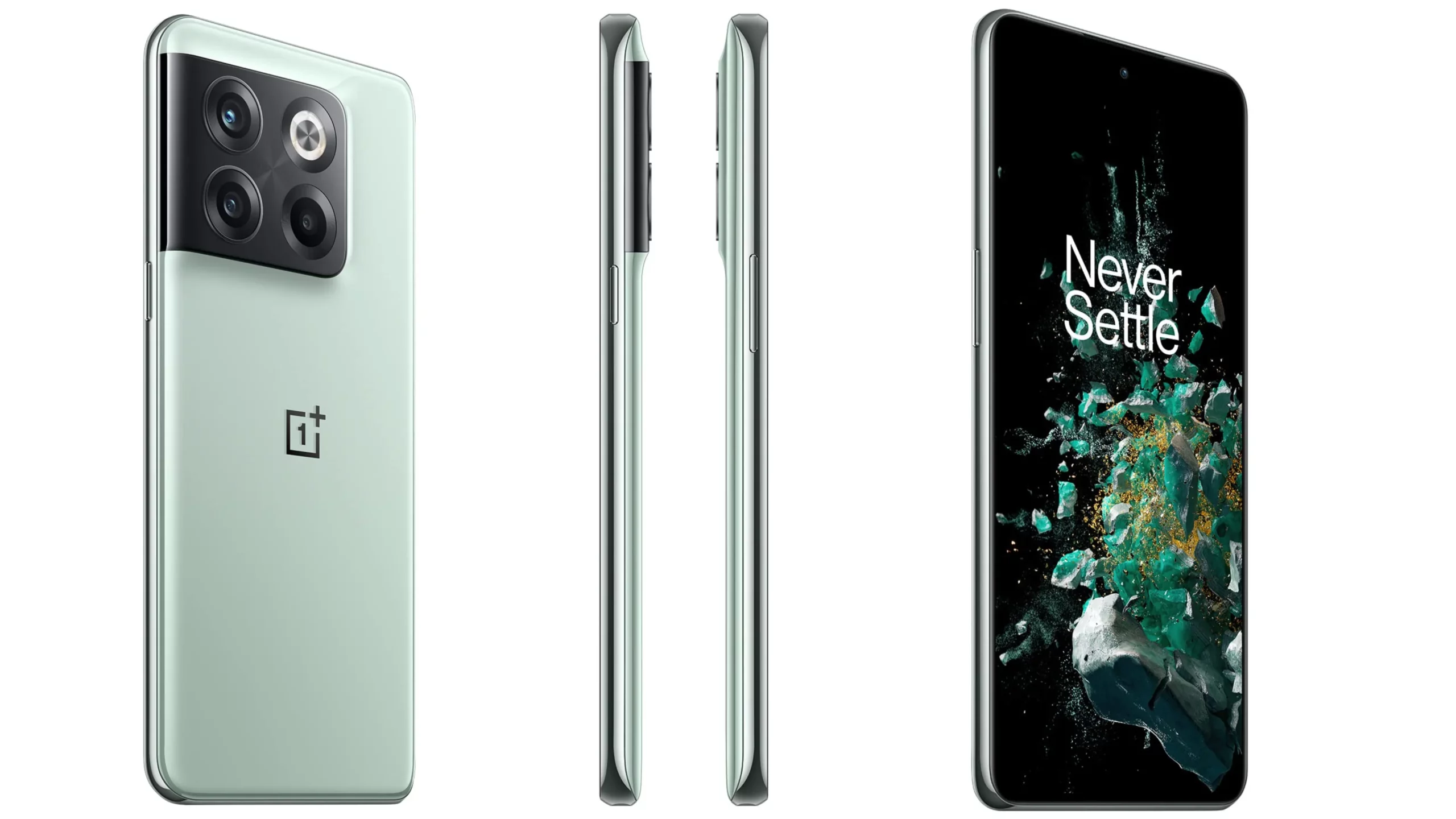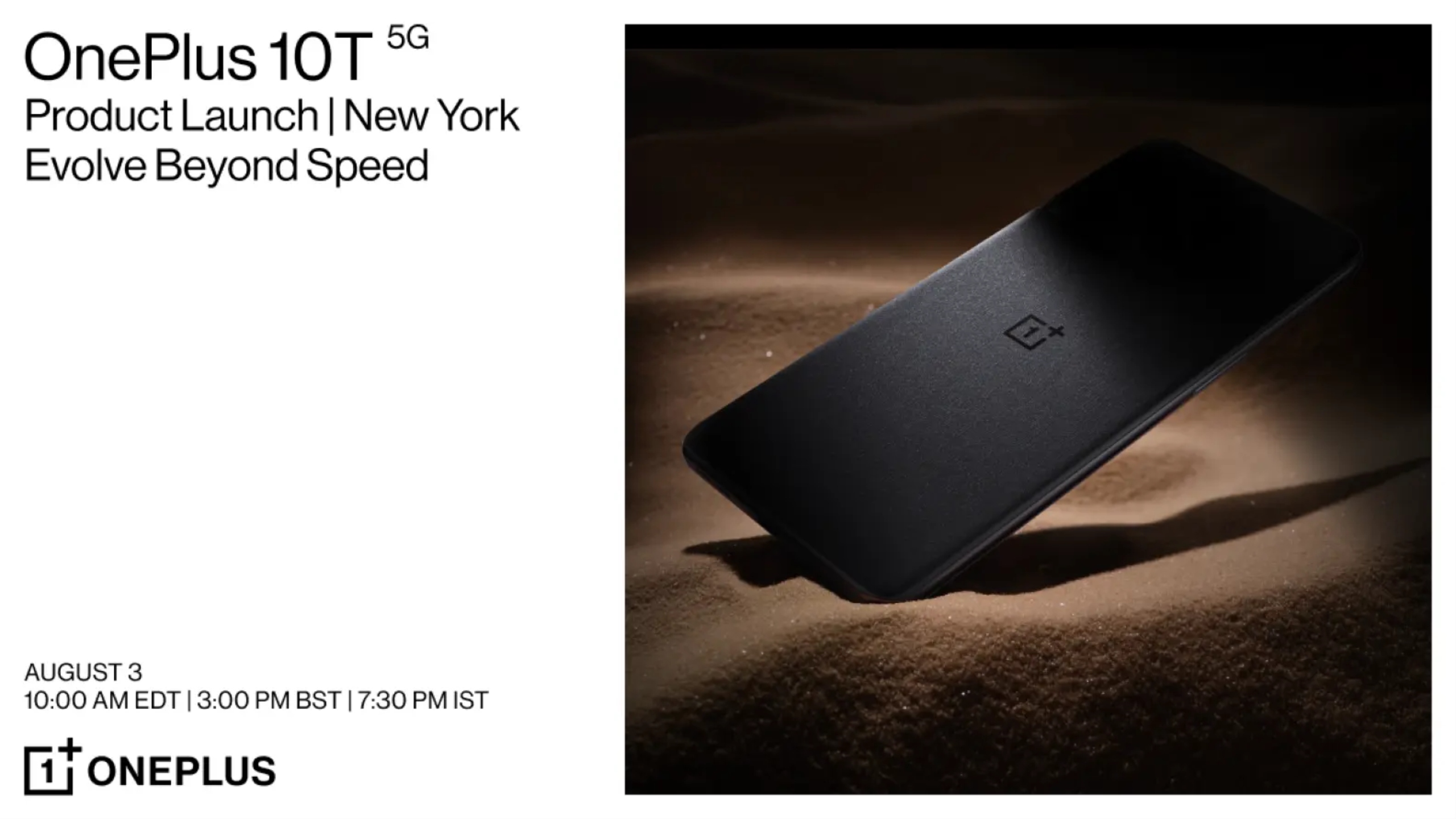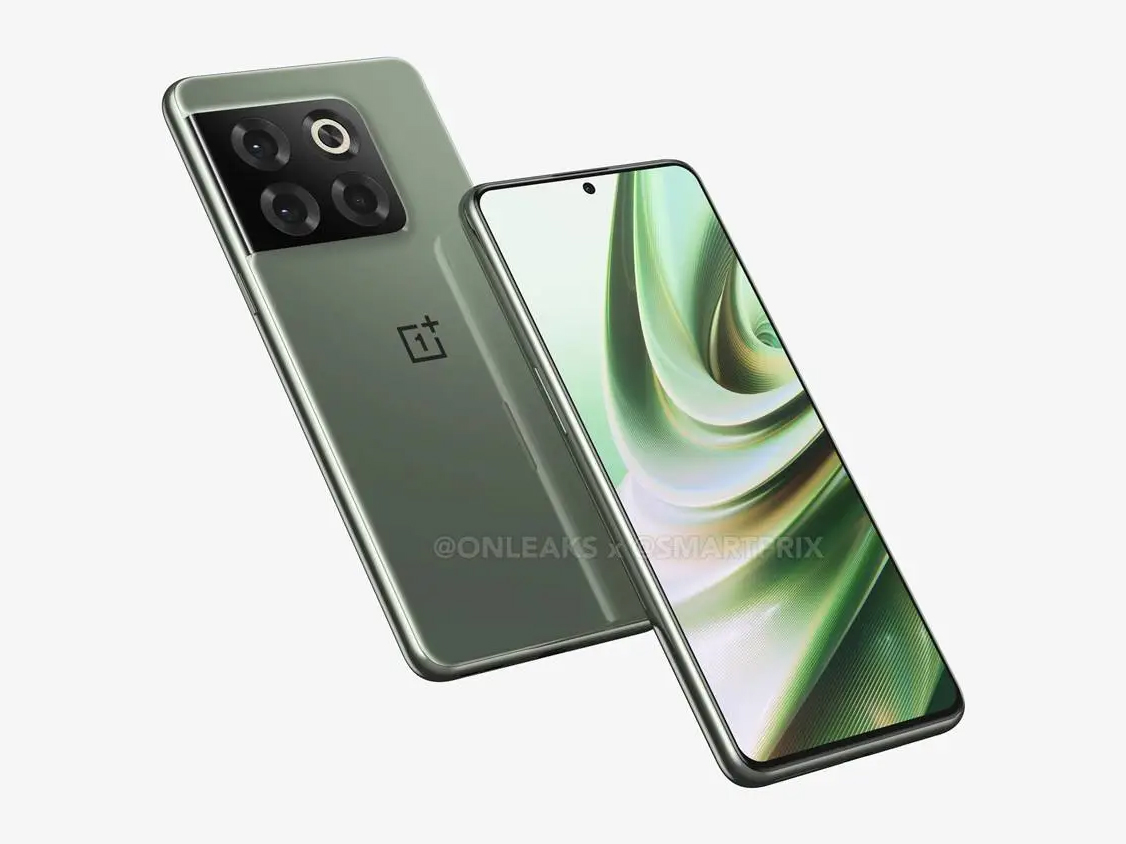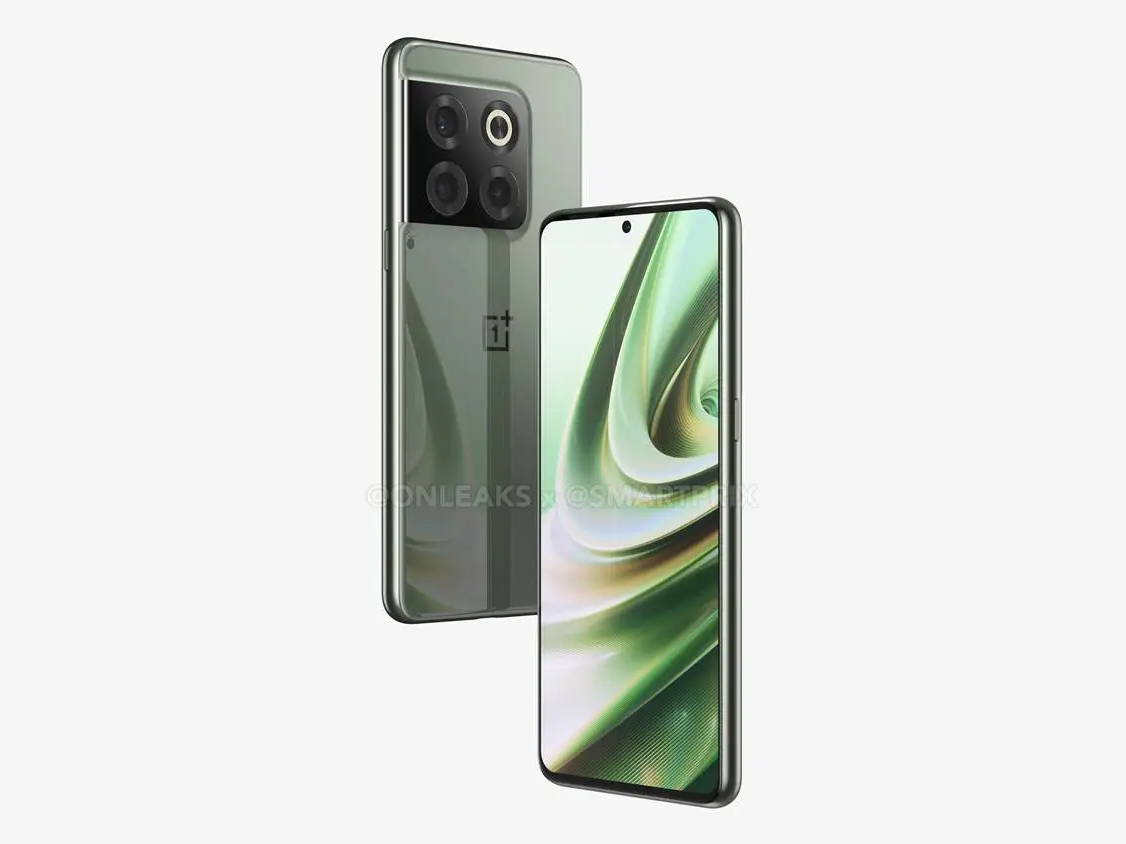The OnePlus 10T is the best competitor to the Pixel 6 to hit the market yet, and it blows away Google’s smartphone in a few departments. That said, missing features and extra add-ons give the Pixel an edge over the 10T in other regards.
The 10T is mostly a successor to last year’s OnePlus 9 with its flat screen, lack of wireless charging and dual camera system (that 2-megapixel macro isn’t fooling anyone). That said, the 10T has the latest Snapdragon 8+ Gen 1, so its gaming performance and battery life are incredible.
It’s important to point out that, as usual, the OnePlus 10T isn’t being sold by Canadian carriers. This means you can only buy it online from OnePlus, though its starting price is a reasonable $849.
Learning a thing or two from the Nord
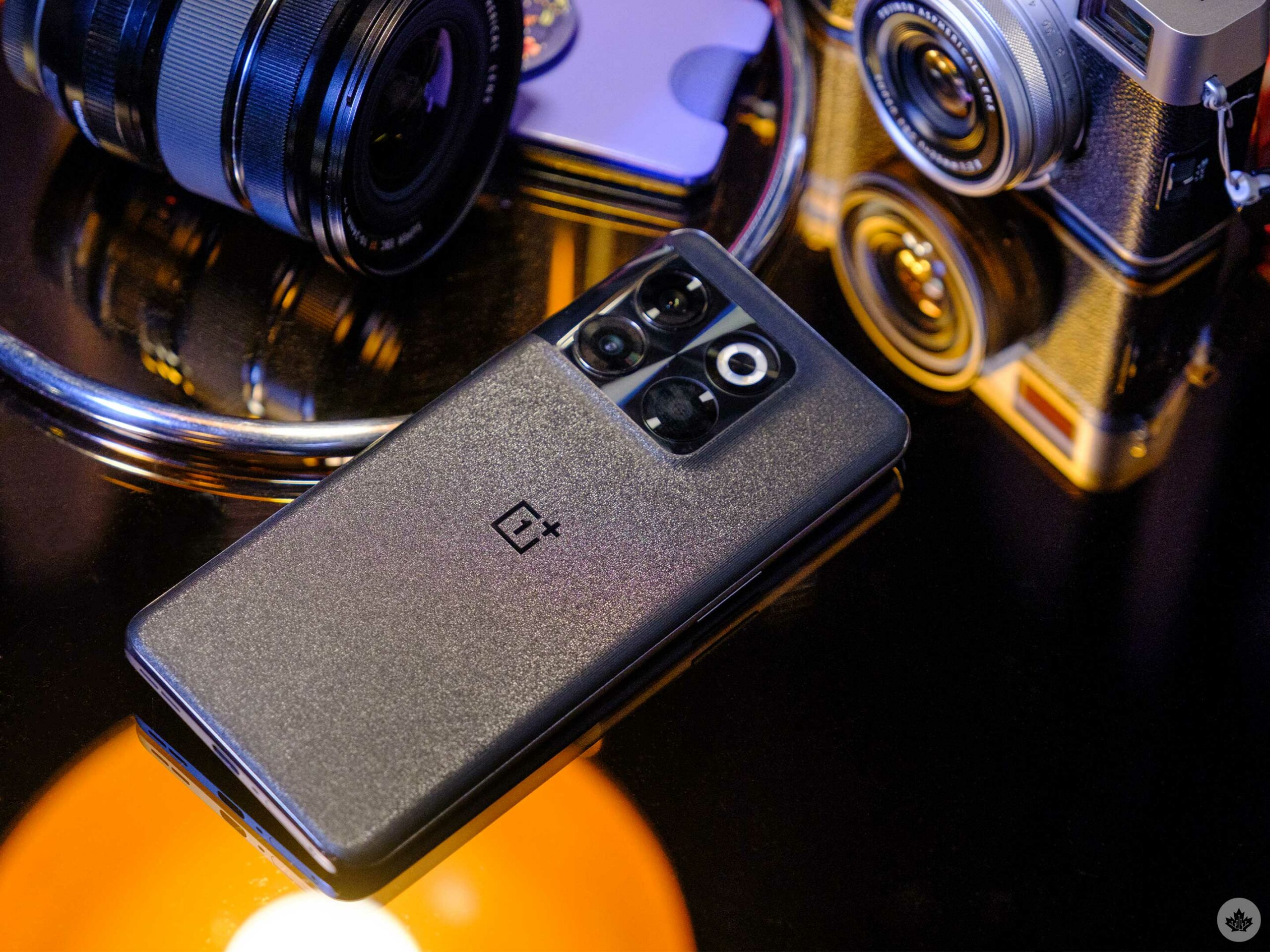
The 10T looks a lot like the 10 Pro from a distance.
While there’s nothing outright wrong with the OnePlus 10T’s design, I’ve found that the hardware reminds me more of the OnePlus Nord than a true OnePlus flagship like the 10 Pro.
The back of the device (in Moonstone Black) is a sparkly Gorilla Glass 5 panel that catches the light and looks like a stone but feels more like plastic in hand. The Jade Green model has no texture and is just a smooth glass panel. I can only assume it must have cost a fortune to add the sandstone finish to the original OnePlus One because reviewers have been asking for its return for years, and this new basalt rock texture isn’t even close.
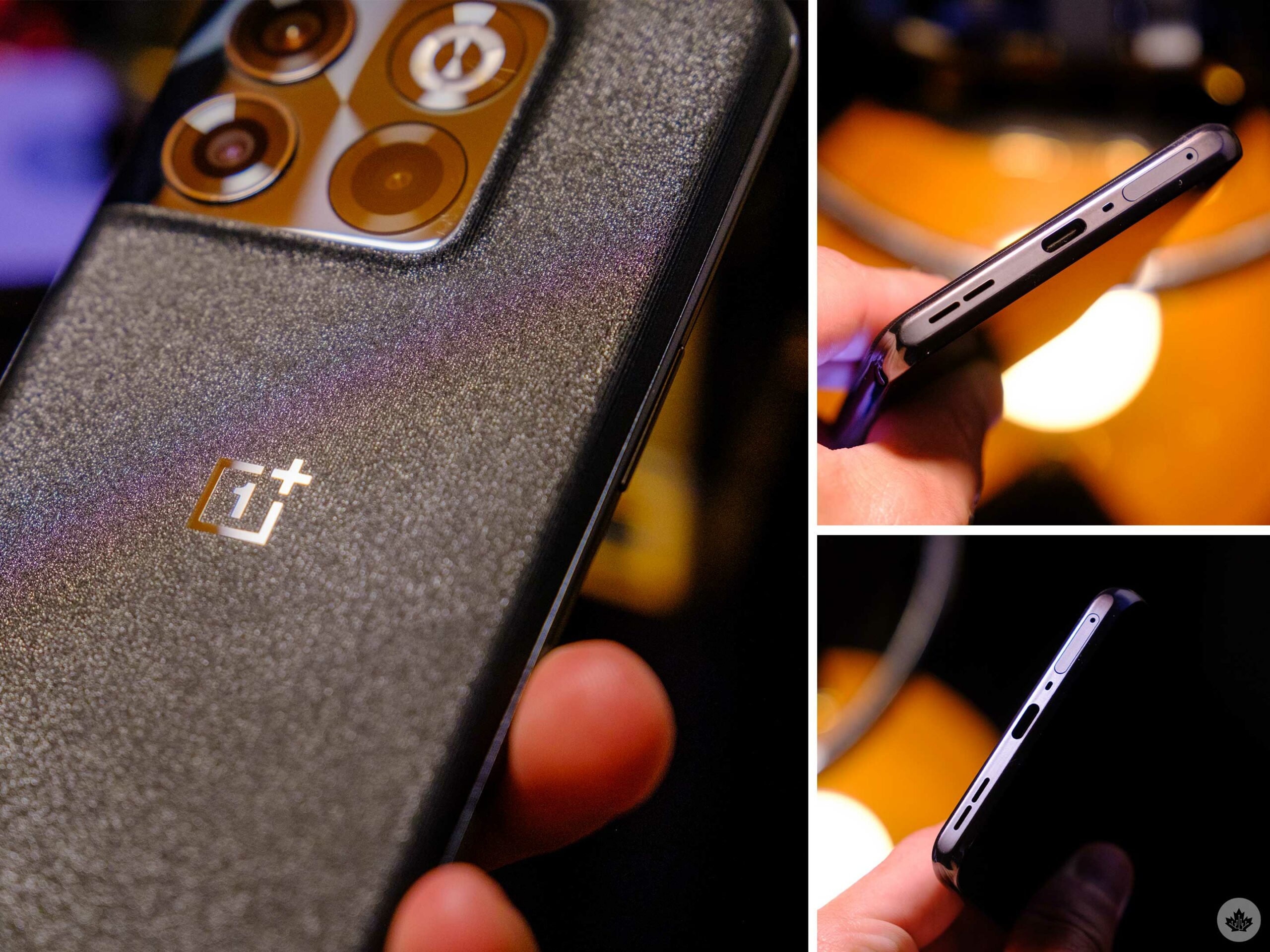
The basalt-type finish on the back feels nice, but it’s not a very noticeable texture.
The camera bump fades into the phone a little more this time, but it looks like the 10 Pro without any Hasselblad branding from a few steps away. This, unfortunately, means it’s just as much of a fingerprint magnet as before.
The top and bottom of the phone are metal, but the edges are plastic. They don’t feel bad, but it’s worth noting since the OnePlus 10T is being marketed as a flagship device, and its design doesn’t quite get there.
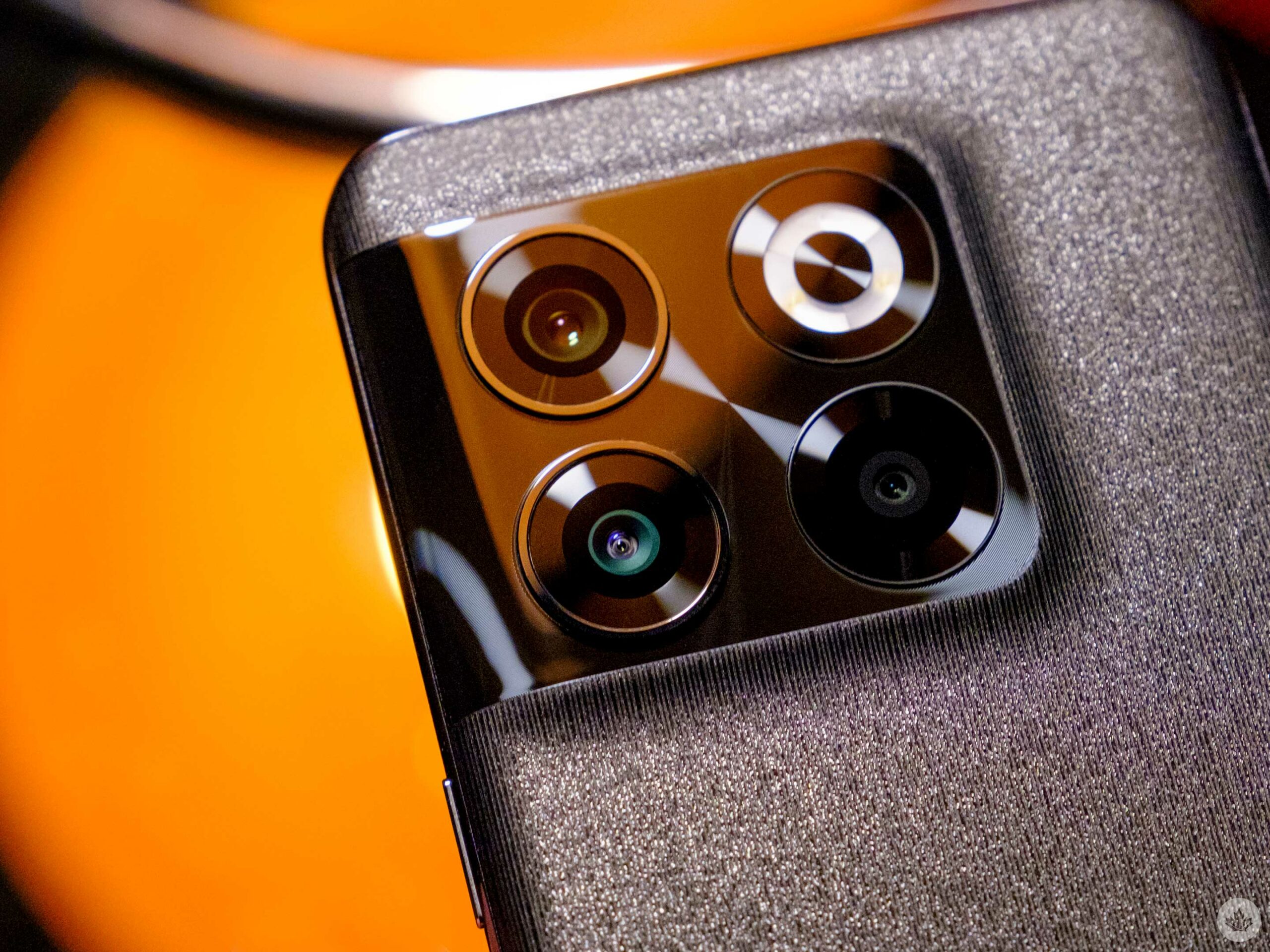
You’ll notice no mention of Hasselblad on this camera bump.
The buttons are clicky, but there’s no alert slider this time. OnePlus says it took this out to make more room for the vapour chamber and the new fast charging mechanics. This wouldn’t be a huge problem if the company had implemented a software replacement, but it hasn’t yet. Without the slider or software replacement, it’s annoying to change the ringer volume on the phone. I’m astonished that a software silent button doesn’t just appear when you tap on the volume button as it does on the Pixel 6. I’m hoping that OnePlus will remedy this problem soon.
Moving around to the front of the phone, you get even more 2016-era Gorilla Glass 5. My review unit even has a few scratches after about a week and a half of use. This is disappointing compared to the Gorilla Glass Victus on the 10 Pro or the Pixel 6.

Out of all the phones in this picture, the 10T feels the least premium.
Overall, the OnePlus 10T’s design isn’t that much of a turn-off. Like the Nord line, OnePlus is doing a lot with a little here, but it’s setting expectations high by marketing the 10T as a flagship like the 10 Pro. Instead, it should position this device as a ‘return to form’ like its mid-range Nord devices.
The true treasure is inside the phone
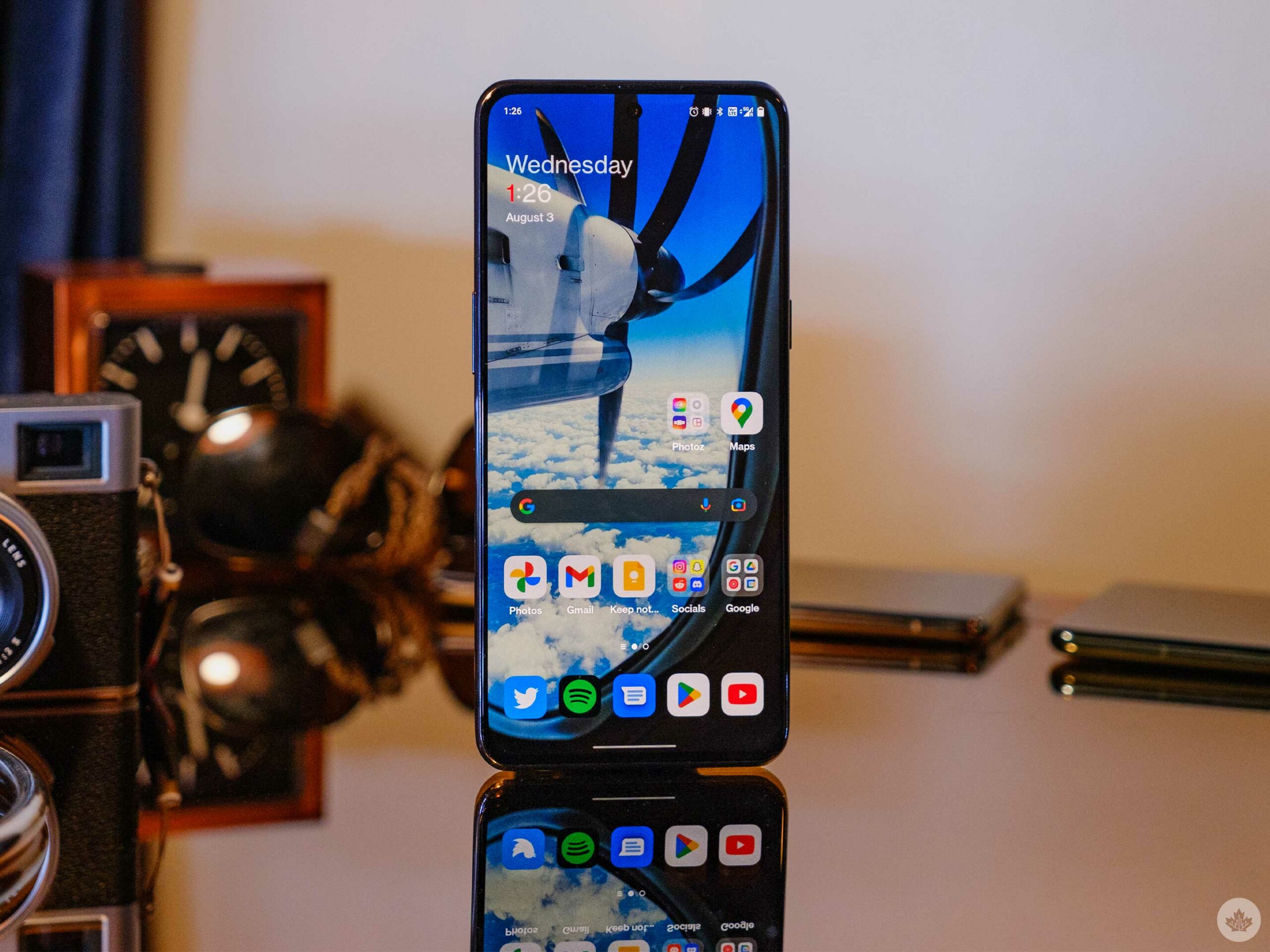
Like the 10 Pro, the 10T has a 10-bit screen for punchy colours.
Inside is where OnePlus made all the major changes this time around. There’s a new dual cell 4,800 mAh battery that can be fast charged with OnePlus’ included 165-watt charger from zero to 100 percent in under 25 minutes, which is incredible. Plus, the efficiency gains from the new Qualcomm Snapdragon 8+ Gen 1 chipset give this device incredible battery life.
On my first day with the smartphone, I topped it up to 100 percent, ran it for a full 24 hours and impressively got over seven hours of screen on time. With less use, I was able to stretch the phone to last over 36 hours by only using around six hours of screen time. And these were days when I’d watch lots of YouTube and take lots of pictures.
6.7-inch FHD+ 120Hz refresh rate
6.4-inch FHD+ (1080 x 2400) OLED display, 411ppi, 90Hz refresh rate
6.7 inches LTPO2 Fluid AMOLED 120Hz refresh rate
50-megapixel (f/1.8, OIS, 23mm equivalent) + 8-megapixel ultra wide (f/2.2, 119-degrees) + 2-megapixel macro
50-megapixel (primary) + 12-megapixel (ultrawide)
48-megapixel (f/1.8, 23mm, OIS,) + 8-megapixel (f/2.4, 77mm, OIS) + 50-megapixel (f/2.2, 14mm)
Fingerprint (in-display), accelerometre, gyro, electronic compass, ambient light sensor, proximity sensor, sensor core, laser sensor, flicker detect sensor and barometer
Fingerprint (in-display), accelerometor, gyro, proximity, compass
Fingerprint (in-display), accelerometre, gyro, electronic compass, ambient light sensor, proximity sensor, sensor core, laser sensor, flicker detect sensor and barometer
Colours: Monestone black or Jade Green
Colours: Kinda Coral, Sorta Seafoam, Stormy Black | IP68 water and dust resistance
Colour: Emerald Forest, Volcanic Black
6.7-inch FHD+ 120Hz refresh rate
6.4-inch FHD+ (1080 x 2400) OLED display, 411ppi, 90Hz refresh rate
6.7 inches LTPO2 Fluid AMOLED 120Hz refresh rate
50-megapixel (f/1.8, OIS, 23mm equivalent) + 8-megapixel ultra wide (f/2.2, 119-degrees) + 2-megapixel macro
50-megapixel (primary) + 12-megapixel (ultrawide)
48-megapixel (f/1.8, 23mm, OIS,) + 8-megapixel (f/2.4, 77mm, OIS) + 50-megapixel (f/2.2, 14mm)
Fingerprint (in-display), accelerometre, gyro, electronic compass, ambient light sensor, proximity sensor, sensor core, laser sensor, flicker detect sensor and barometer
Fingerprint (in-display), accelerometor, gyro, proximity, compass
Fingerprint (in-display), accelerometre, gyro, electronic compass, ambient light sensor, proximity sensor, sensor core, laser sensor, flicker detect sensor and barometer
Colours: Monestone black or Jade Green
Colours: Kinda Coral, Sorta Seafoam, Stormy Black | IP68 water and dust resistance
Colour: Emerald Forest, Volcanic Black
This is the biggest win over the Pixel 6. While Google’s contender might look better and offer a more modern-looking OS, the 10T easily gets an extra two or more hours of screen on time. If you need a phone for work or just hate charging your device, it’s difficult to beat OnePlus’ latest charging specs and battery life. I miss the alert slider, but I’d take this extra battery over it any day of the week.
In terms of gaming, the 10T performed well in my brief tests playing Call Of Duty Mobile. OnePlus has added a larger vapour chamber this time around, which helps with thermal management. This means you can game a little longer without heating up the phone like crazy, but prolonged sessions still get hot.
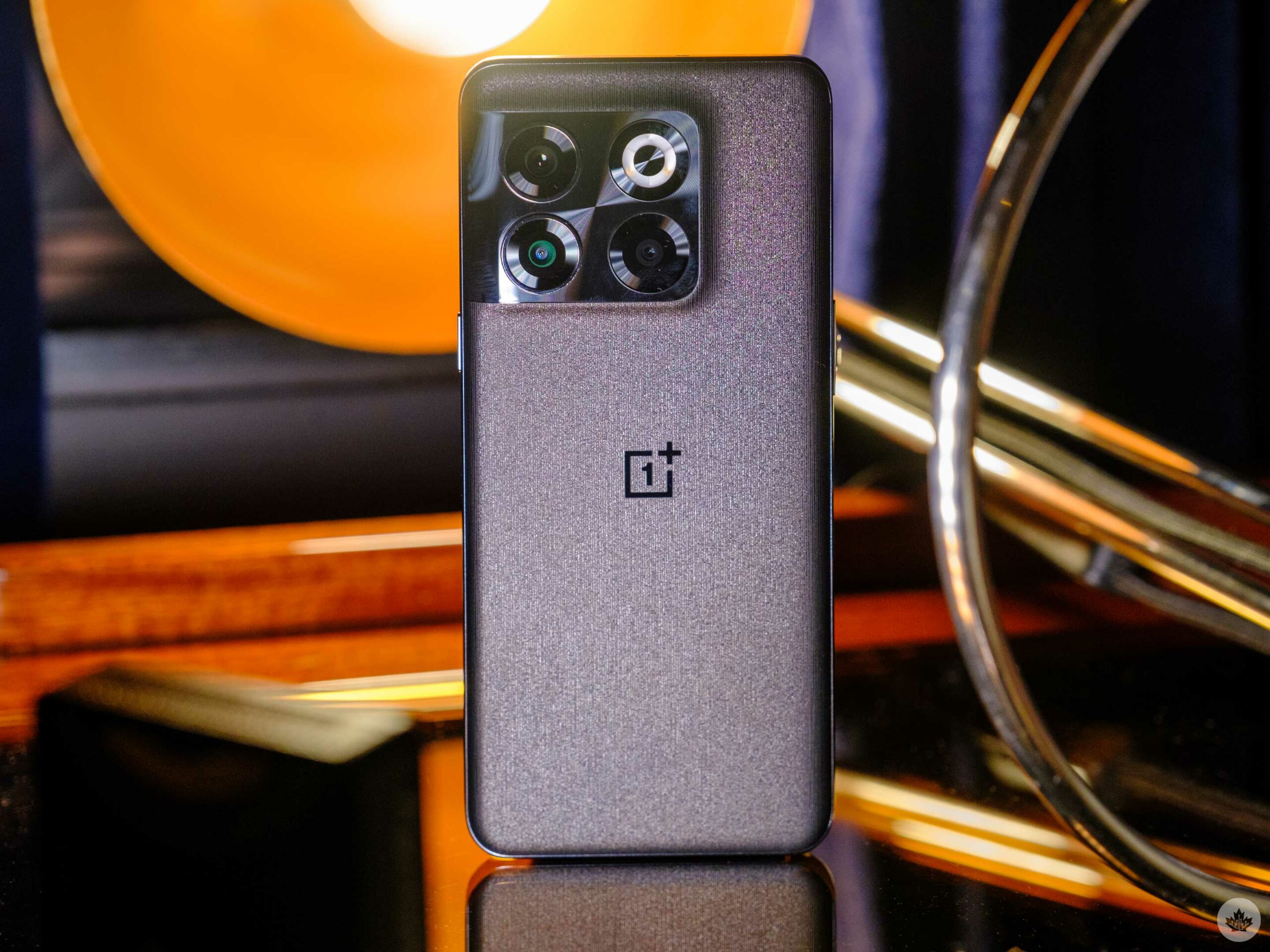
The screen also adapts between 60Hz, 90Hz and 120Hz, so it should offer a smoother gaming experience. The display features a peak brightness of 950nits and a 1,000Hz touch sampling rate, so it should feel like it responds instantly to your touch.
As a photographer, I’m also a big fan of the screen’s 10-bit colour depth, which looks more pleasing on default settings than the 10 Pro’s display thanks to less of a green undertone. The difference is negligible, but it’s nice that the screen’s colour vibrancy doesn’t appear to be downgraded with the OnePlus 10T.
A final little tweak inside the phone that seems to be paying off is a new antenna system that utilizes a technology called ‘AMP Connect.’ This tool allows the phone to use multiple wireless signals at the same time without degradation of quality. That means that you can use Wi-Fi, Bluetooth and cellular simultaneously. I’ve also found that this phone works well on Telus’ 5G network, which is something the 10 Pro I tested never seemed to be able to do. Cell signal and carrier spectrum support have always been one area where OnePlus lagged behind, so it’s nice to see the company step up its global compatibility.
If you’re looking for a device for mobile gaming or just want a smartphone with top-of-the-line internals, it’s hard to beat the OnePlus 10T.
Three Two cameras
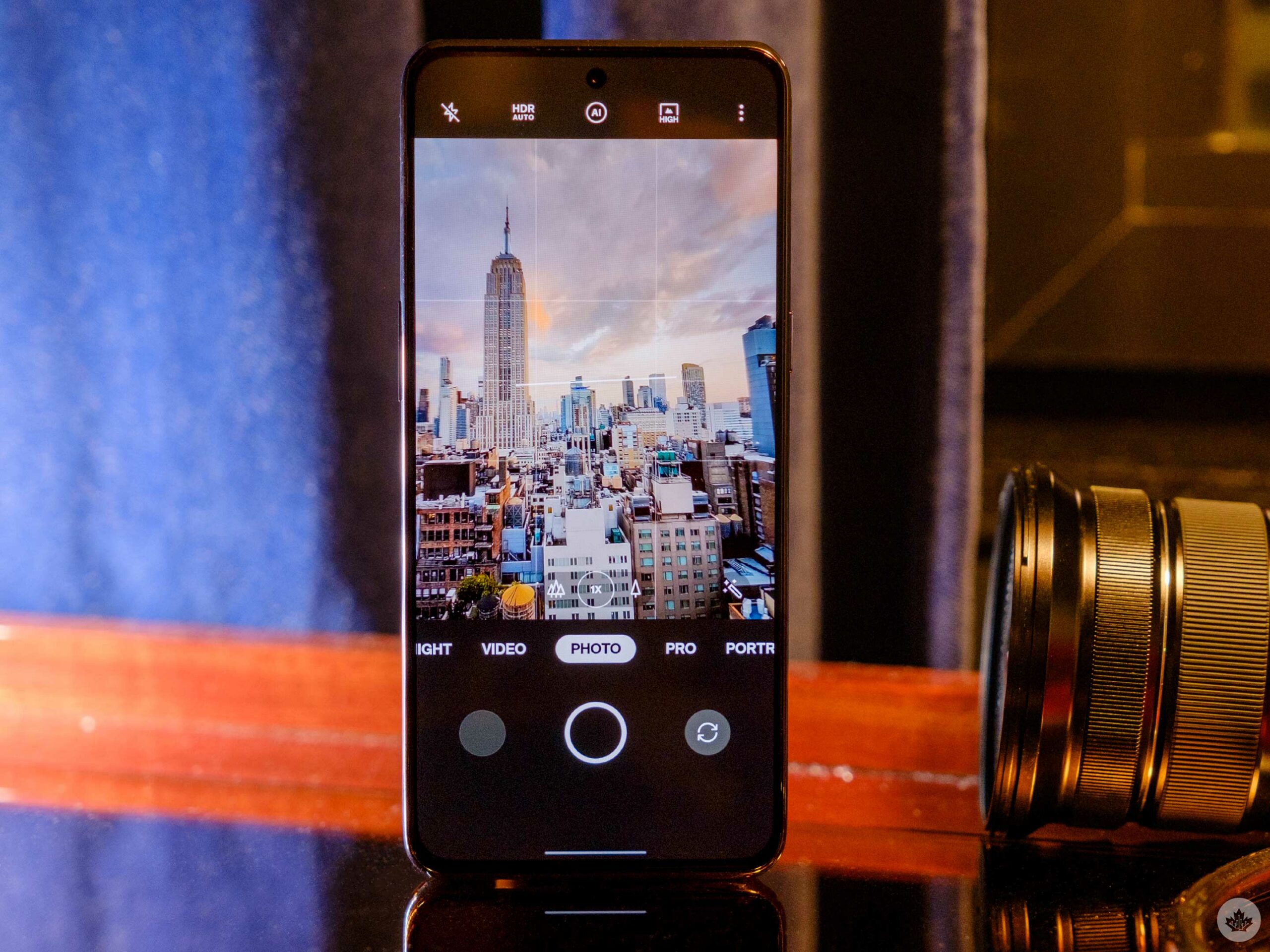
The orange accents are missing from the camera interface without the Hasselblad partnership.
The Hasselblad branding may be gone from the 10T, but the phone’s main camera is no slouch.
The smartphone features a tremendous 50-megapixel sensor that easily competes with the 50-megapixel option from the Pixel 6 in sharpness and detail. The larger sensor also helps give images more depth perception and bokeh, which is a welcome addition. Combining this with OnePlus’ revamped image capture algorithm really helps the smartphone take great photos reliably.
 I’ve been impressed with the primary camera, but the ultrawide is a little more lacklustre. However, it’s more than enough to capture the odd landscape shot. The colours are fairly consistent between the ultrawide and the standard cameras. They’re not perfectly matched, but it feels like OnePlus is getting closer.
I’ve been impressed with the primary camera, but the ultrawide is a little more lacklustre. However, it’s more than enough to capture the odd landscape shot. The colours are fairly consistent between the ultrawide and the standard cameras. They’re not perfectly matched, but it feels like OnePlus is getting closer.
I was also worried that I would be turned off by the camera’s colour science since Hasselblad wasn’t involved this time. To my surprise, the colours are balanced and saturated, though very similar to the 10 Pro. It seems like OnePlus has been able to apply what it’s learned from the 9 Pro and the 10 Pro effectively here, which ideally means that the company’s cameras should continue to get better even after the Hasselblad partnership. The only thing I miss is XPan mode since it’s tied to phones with Hasselblad partnerships.
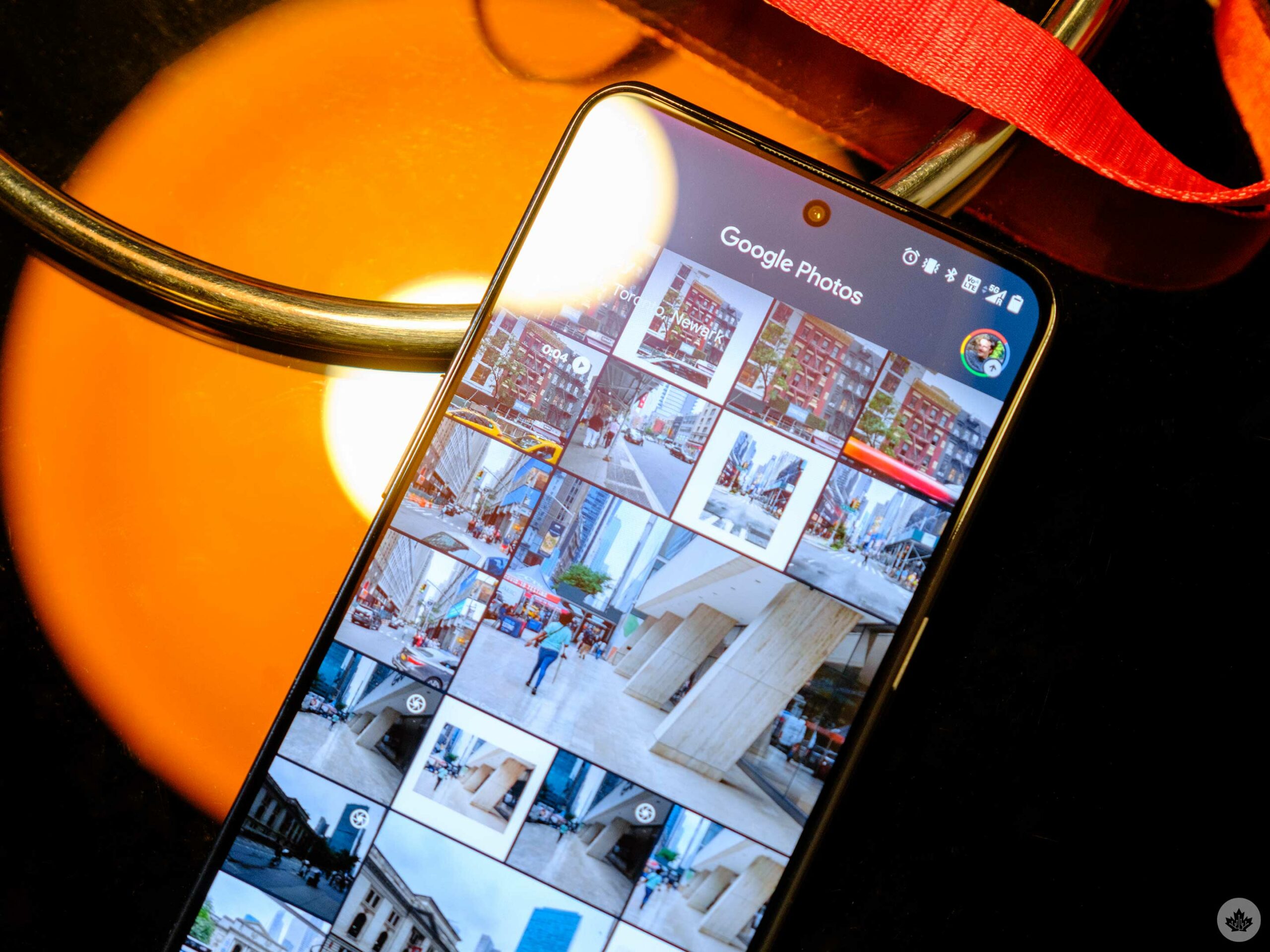
OnePlus has also stepped up its HDR implementation, but sometimes I find that it pulls down the highlights a little much. It also takes a moment to enable once you turn on the camera, so if you’re snapping a fast street shot, there’s a chance that the HDR won’t turn on in time.
The OnePlus 10T’s Night Sight has been improved as well, but I’ve found that in low light, the phone will prioritize a brighter image instead of capturing still motion. This means that if you’re taking pictures of static objects, you’ll get incredibly bright pictures. However, I find that the faces are blurry whenever you take photos of people since the phone is holding the shutter open to gather as much light as possible.
The 10T’s video performance from the main camera is also fine, and the stable zoom toggle that appears once you’re recording is useful.
There’s a two-megapixel macro lens on the back of the 10T. It’s one of those random lenses that seems like it’s there to fill in the camera bump more than for its quality. It’s fine but not nearly as helpful as a telephoto or an alert slider.
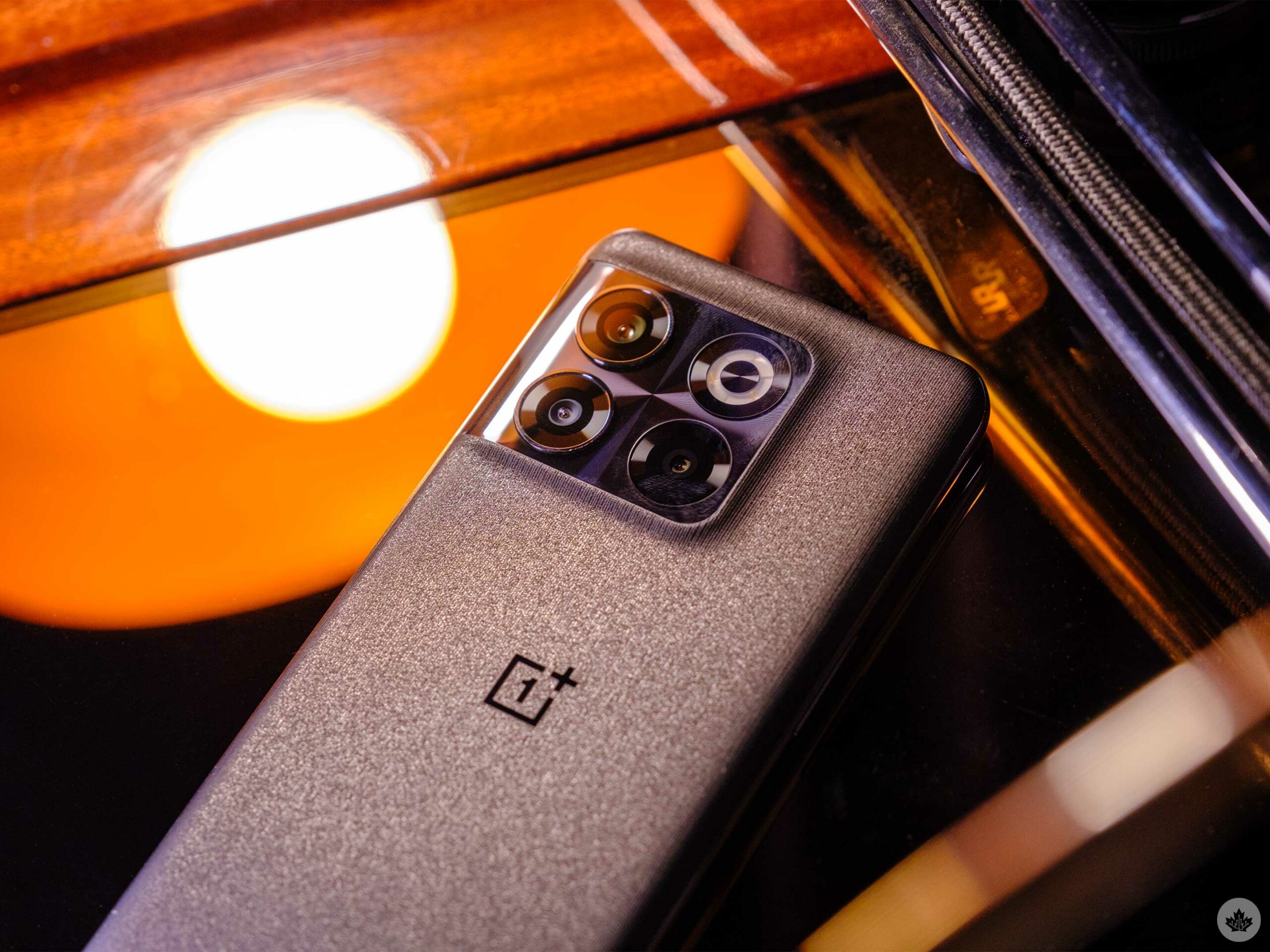
Like the 10 Pro, the big flat camera bump on the 10T is a fingerprint magnet.





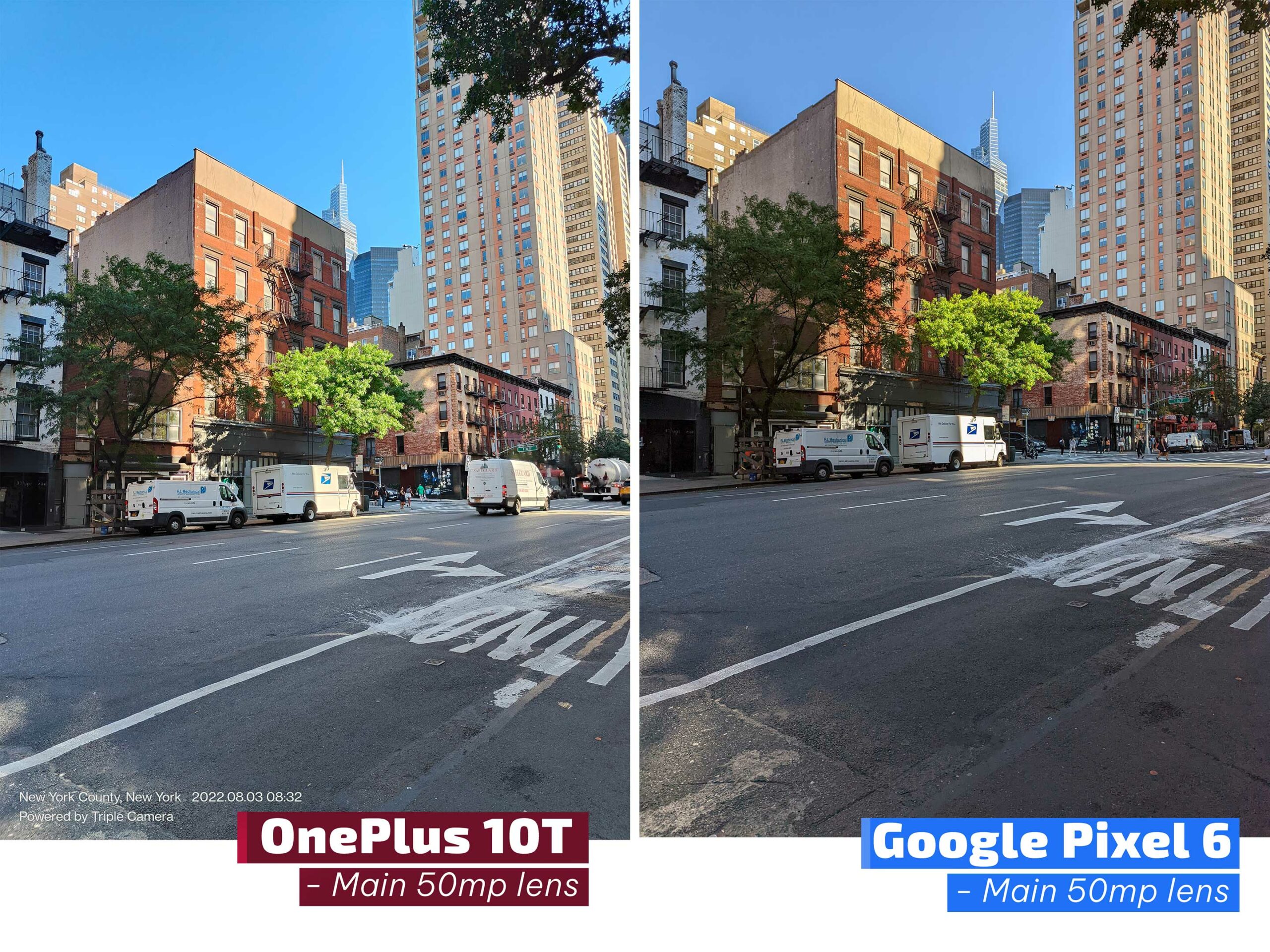

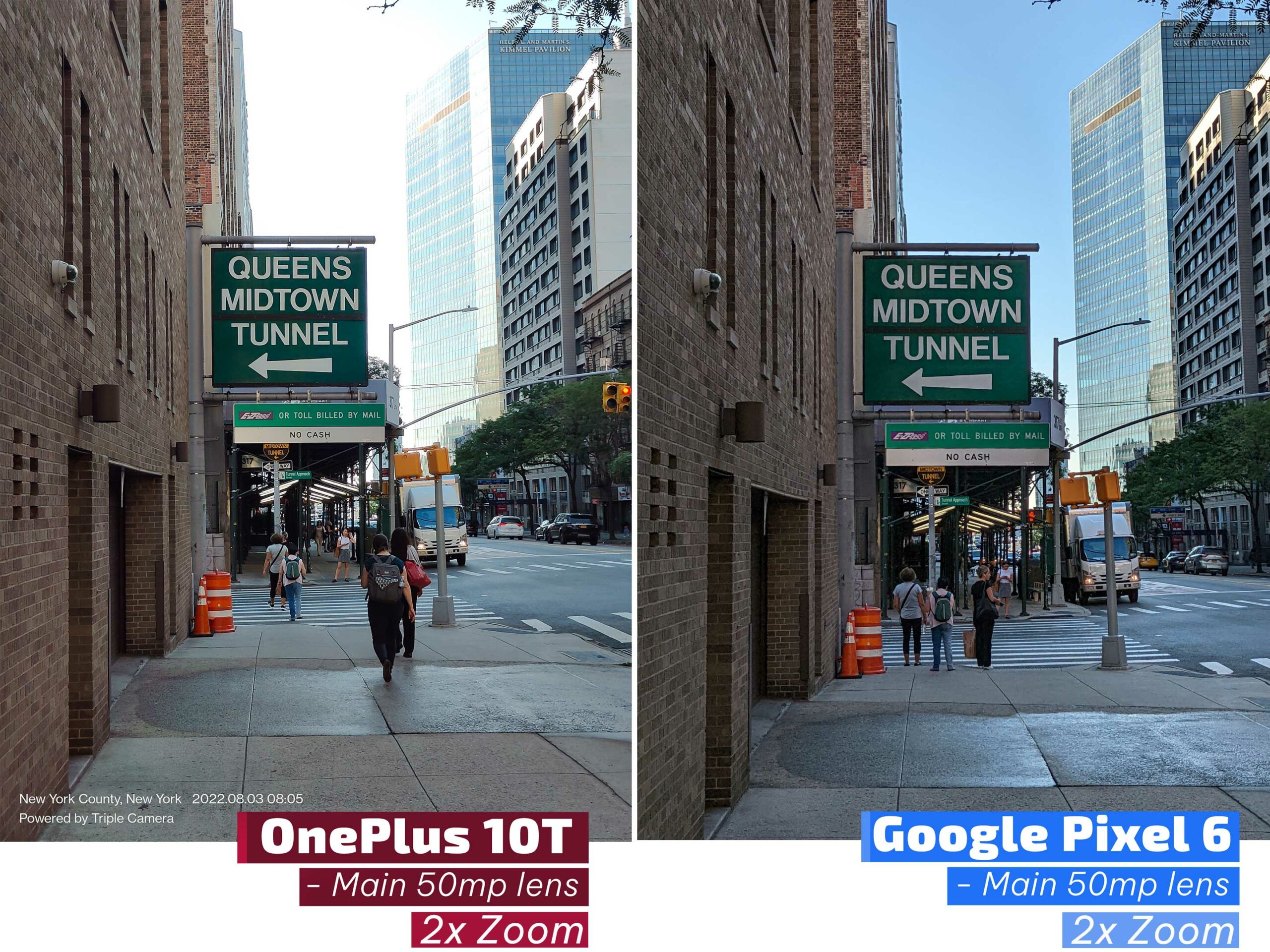

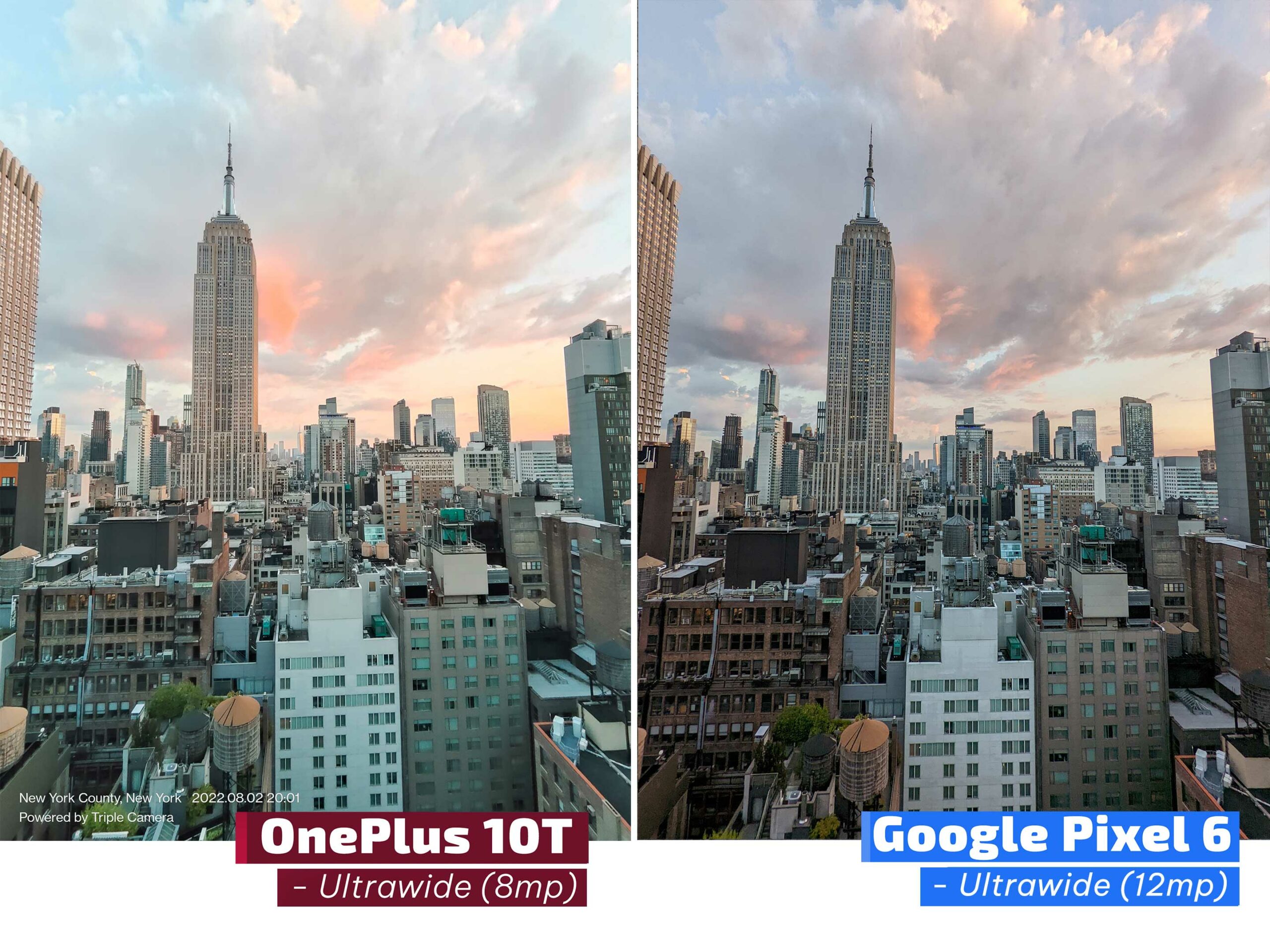
 OnePlus handily takes the cake in the macro category since the Pixel 6 doesn’t even feature a macro ability. While it’s niche, there’s no doubt that it can grab some fun shots that a lot of other smartphones will struggle to catch.
OnePlus handily takes the cake in the macro category since the Pixel 6 doesn’t even feature a macro ability. While it’s niche, there’s no doubt that it can grab some fun shots that a lot of other smartphones will struggle to catch.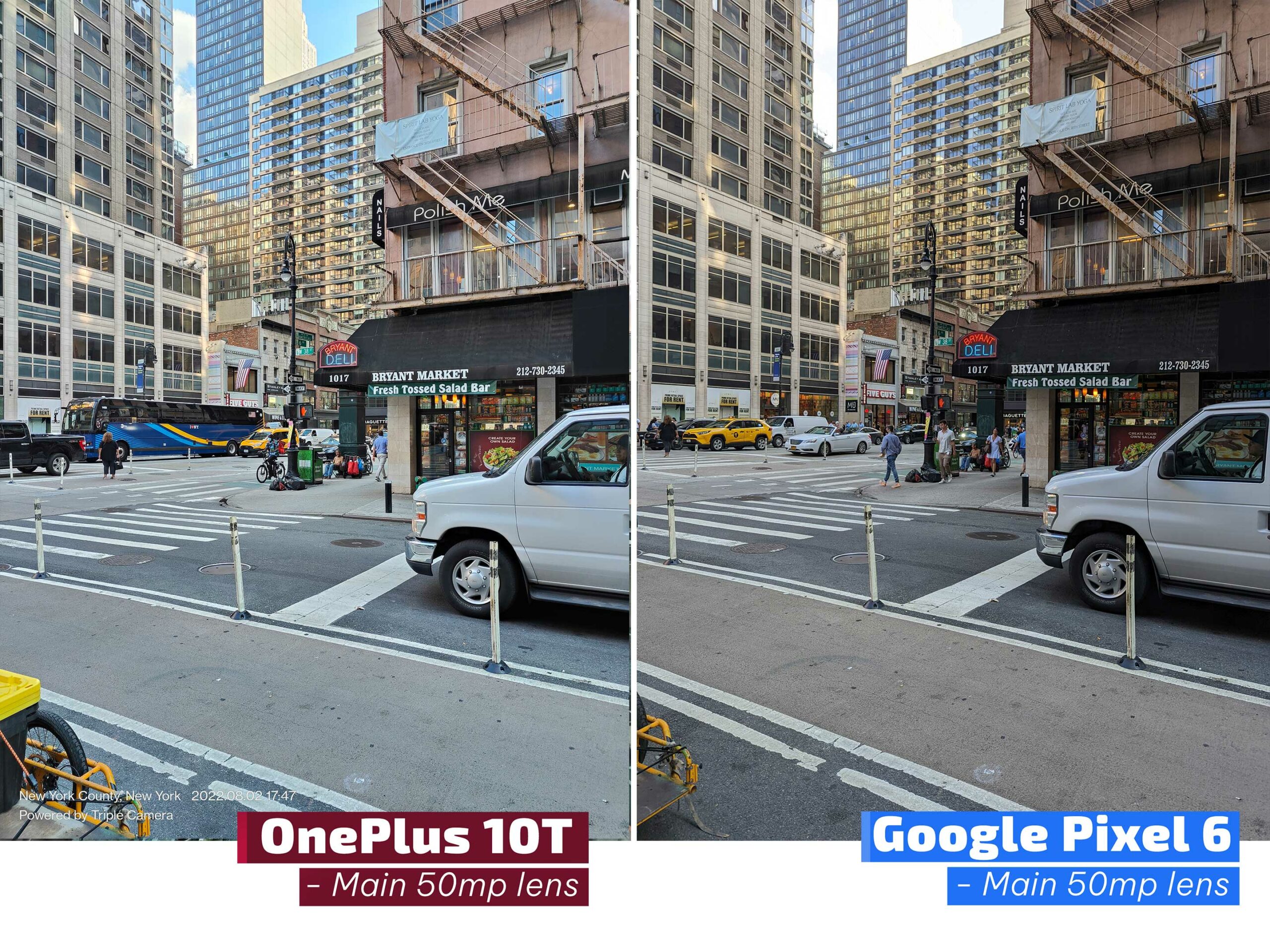 Under most circumstances, the devices snap very similar pictures, and I have a feeling that if I asked 100 people which of the above photos they liked more, it would go 50/50 each way. Phone cameras have come a long way in the last three years, and it seems that regardless of what phone you end up with, you can likely get great shots out of it with a little bit of editing.
Under most circumstances, the devices snap very similar pictures, and I have a feeling that if I asked 100 people which of the above photos they liked more, it would go 50/50 each way. Phone cameras have come a long way in the last three years, and it seems that regardless of what phone you end up with, you can likely get great shots out of it with a little bit of editing.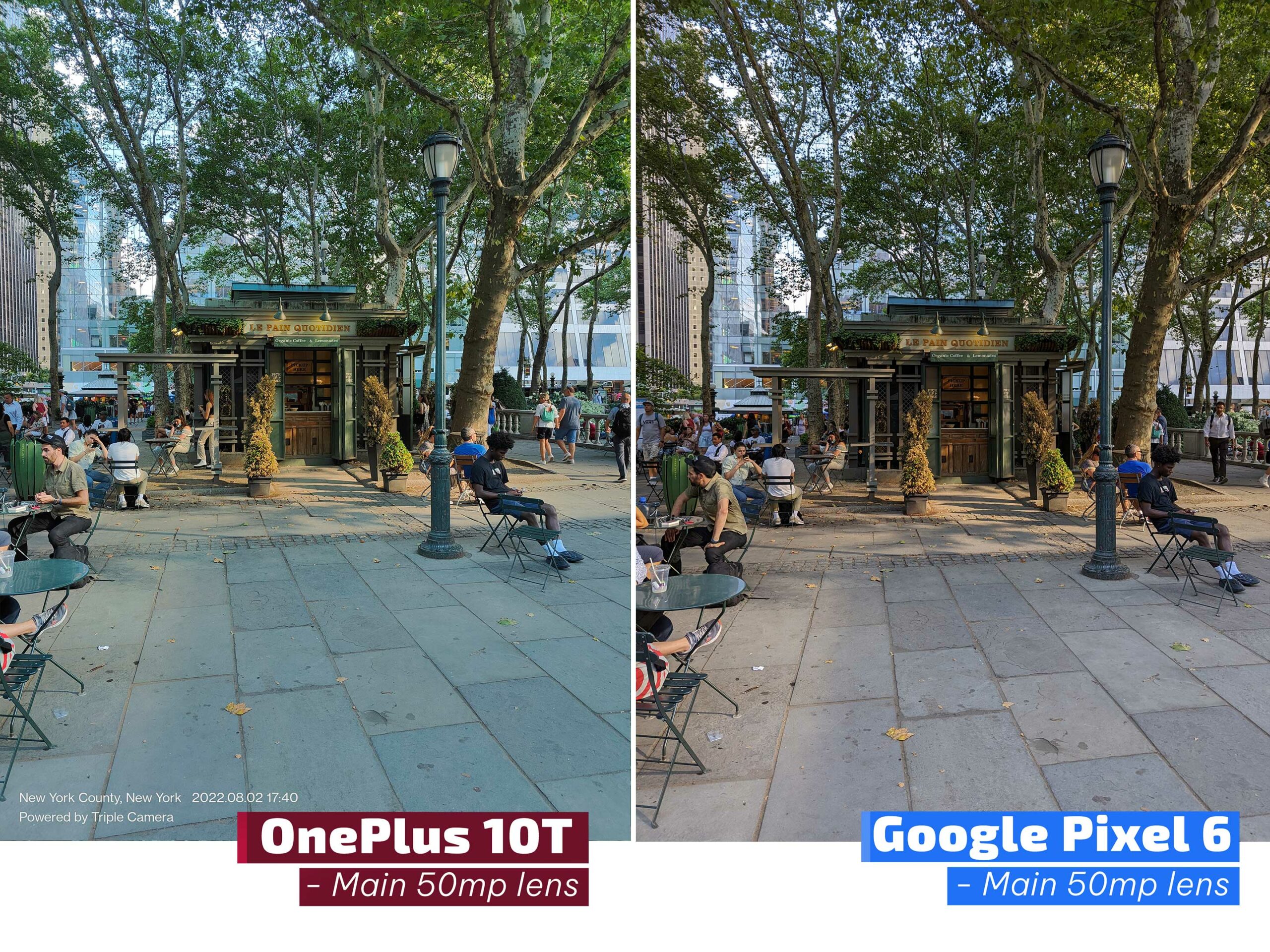
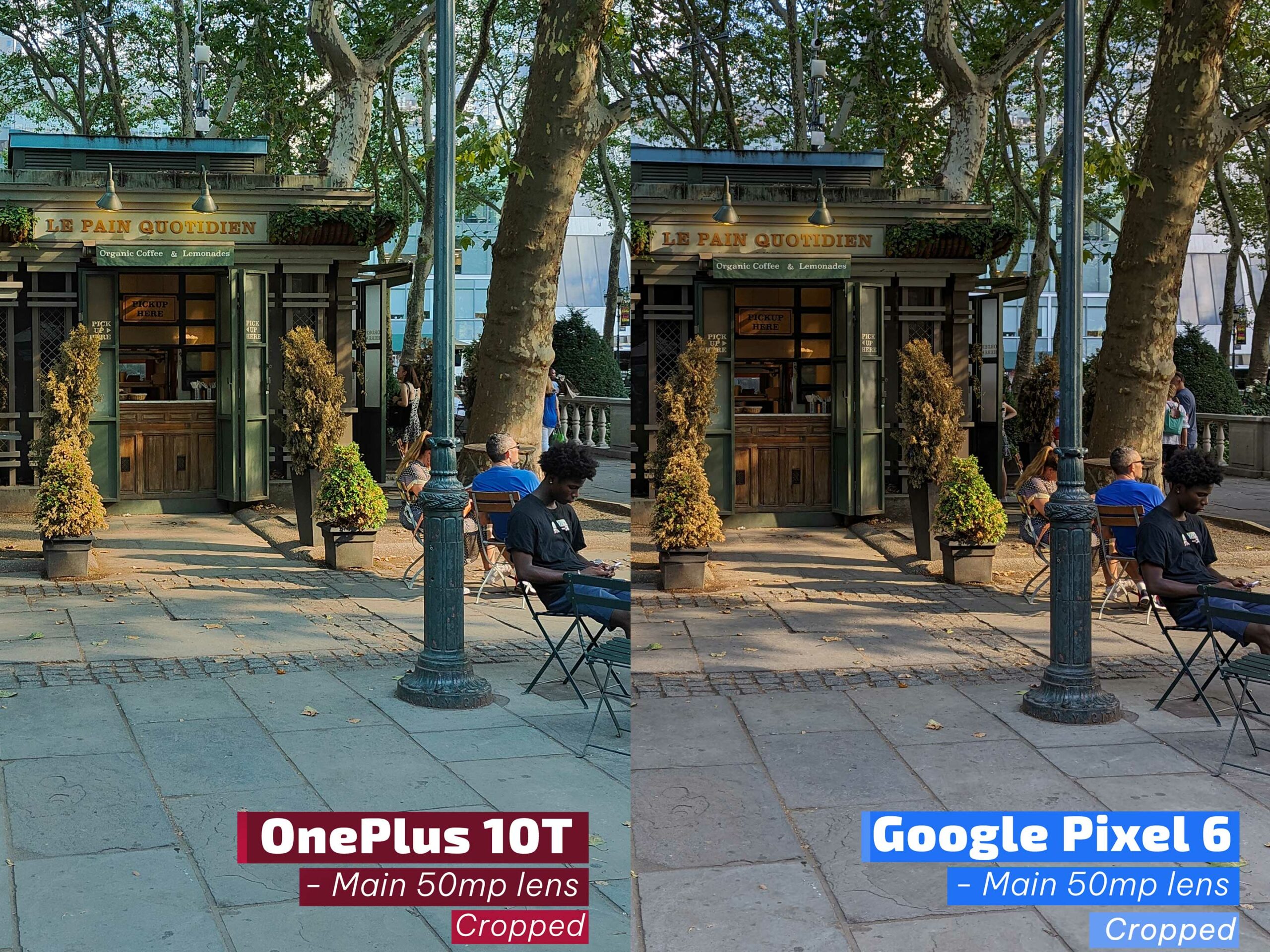

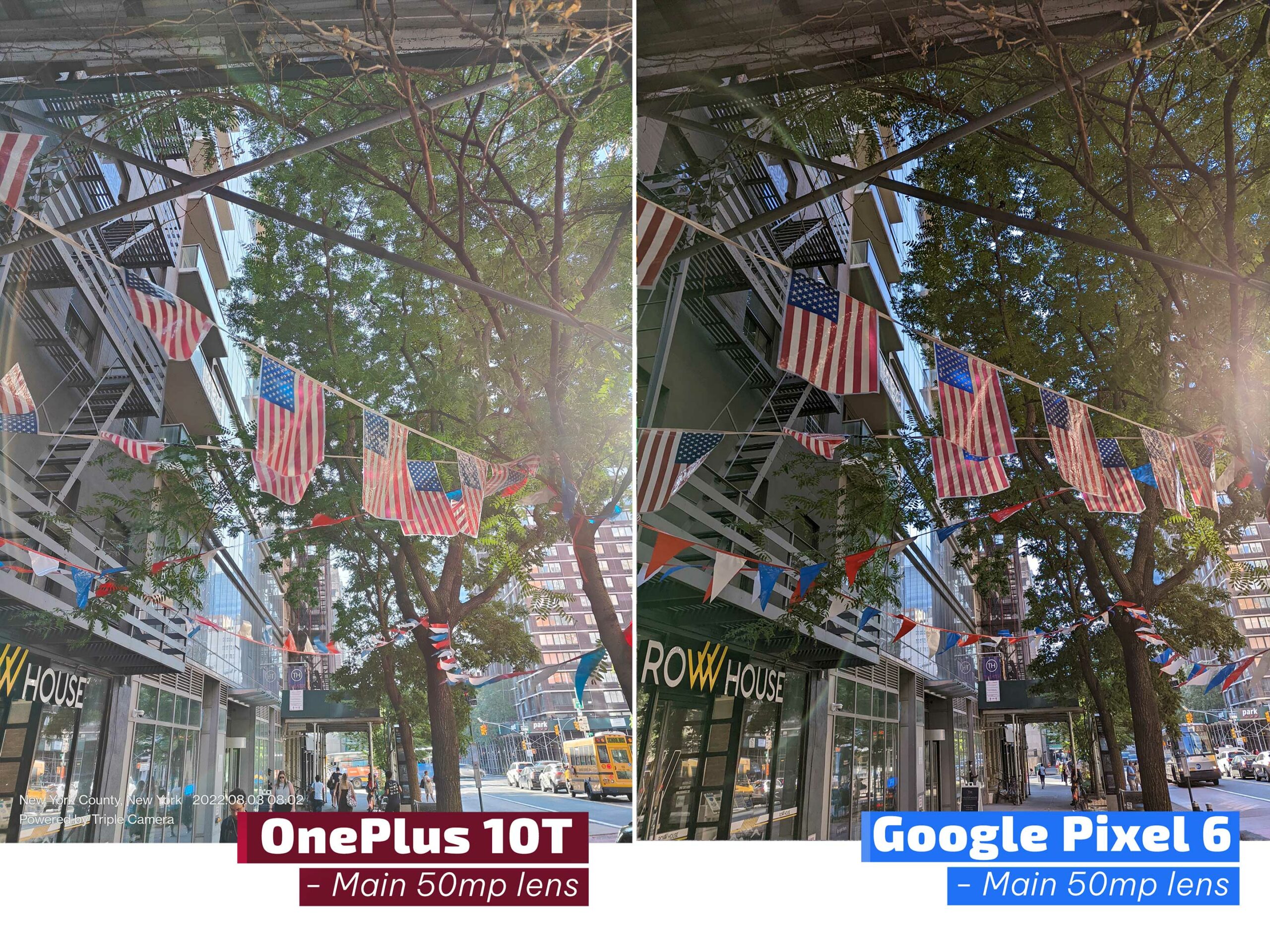







 I’ve been impressed with the primary camera, but the ultrawide is a little more lacklustre. However, it’s more than enough to capture the odd landscape shot. The colours are fairly consistent between the ultrawide and the standard cameras. They’re not perfectly matched, but it feels like OnePlus is getting closer.
I’ve been impressed with the primary camera, but the ultrawide is a little more lacklustre. However, it’s more than enough to capture the odd landscape shot. The colours are fairly consistent between the ultrawide and the standard cameras. They’re not perfectly matched, but it feels like OnePlus is getting closer.




